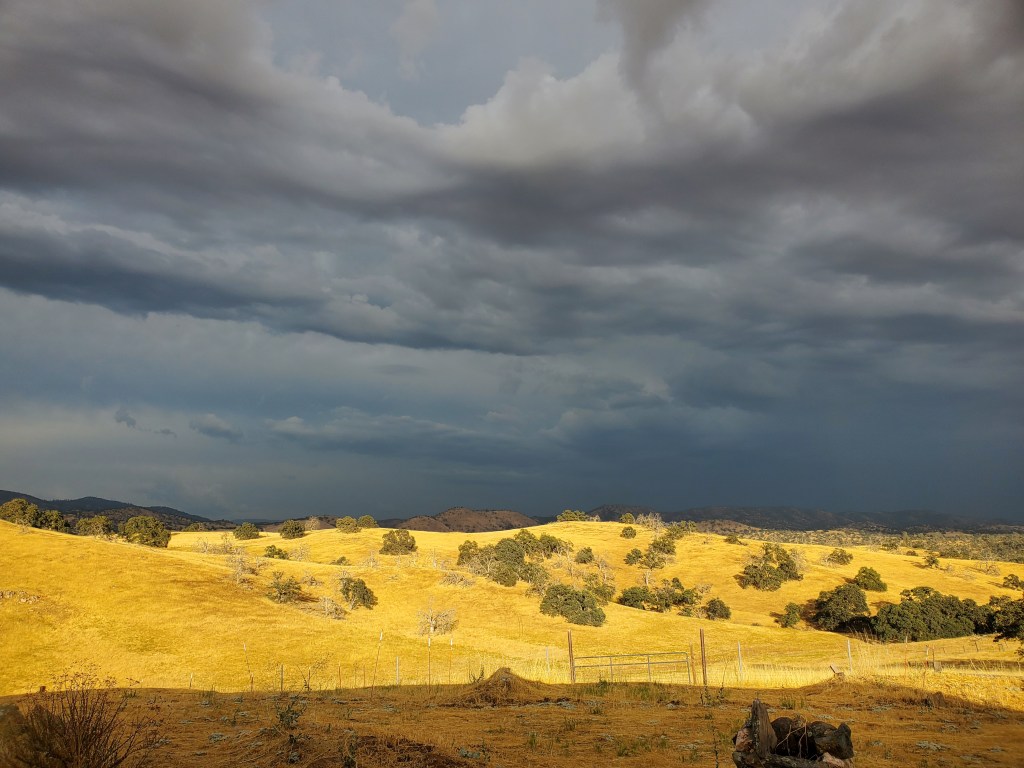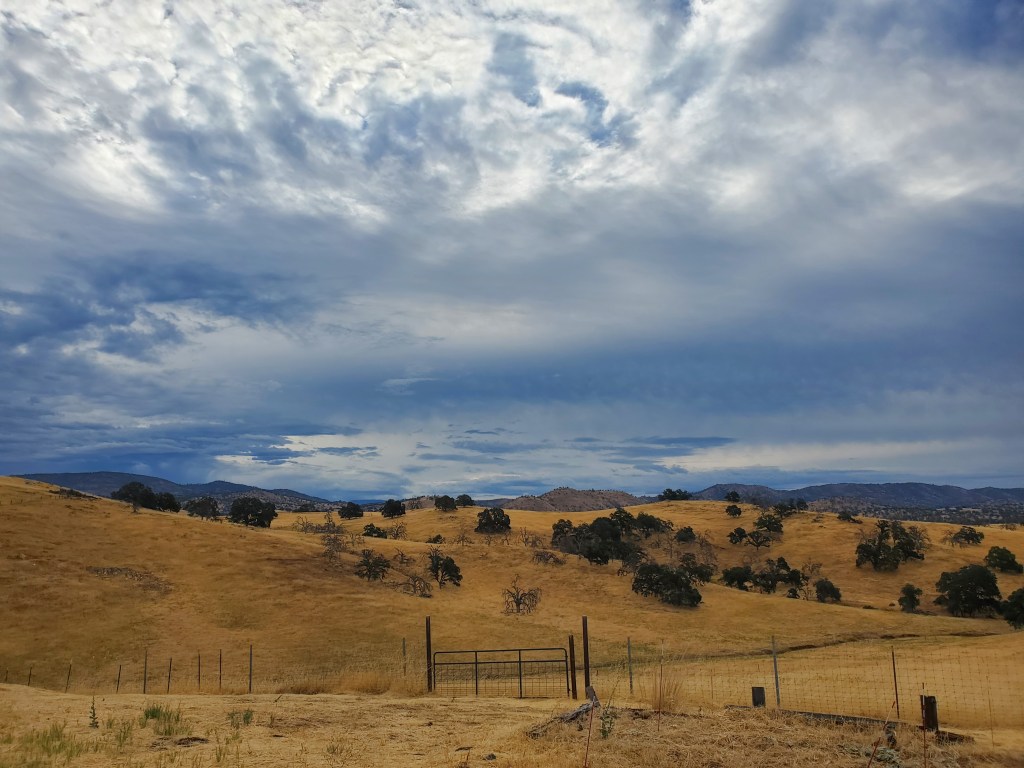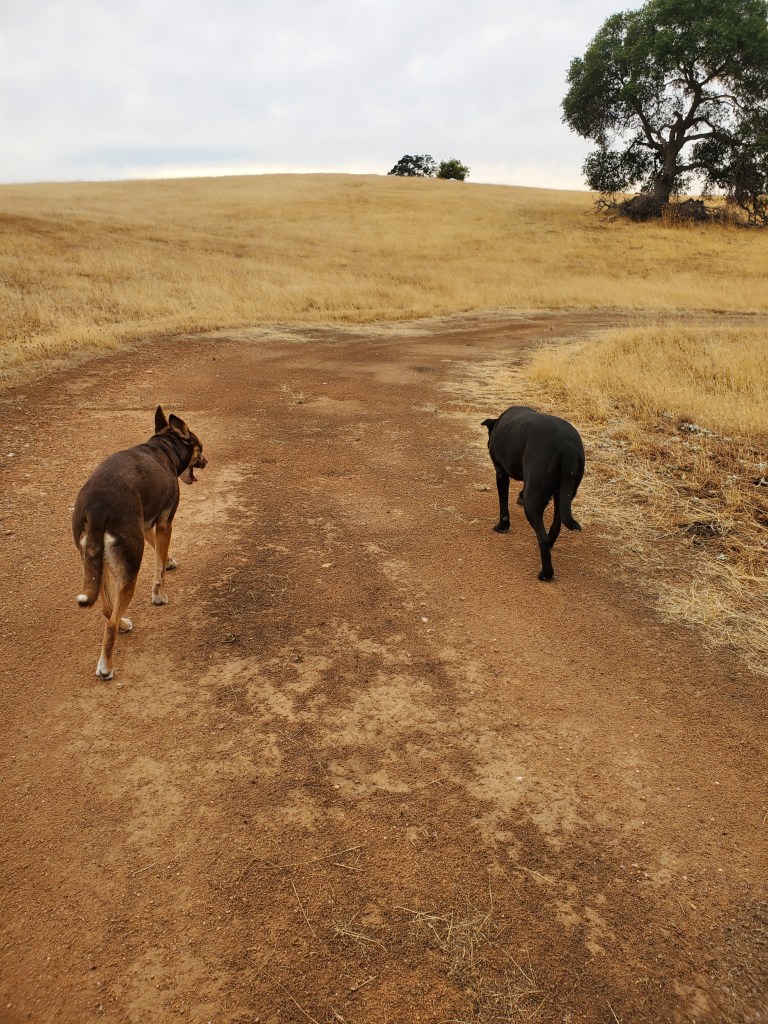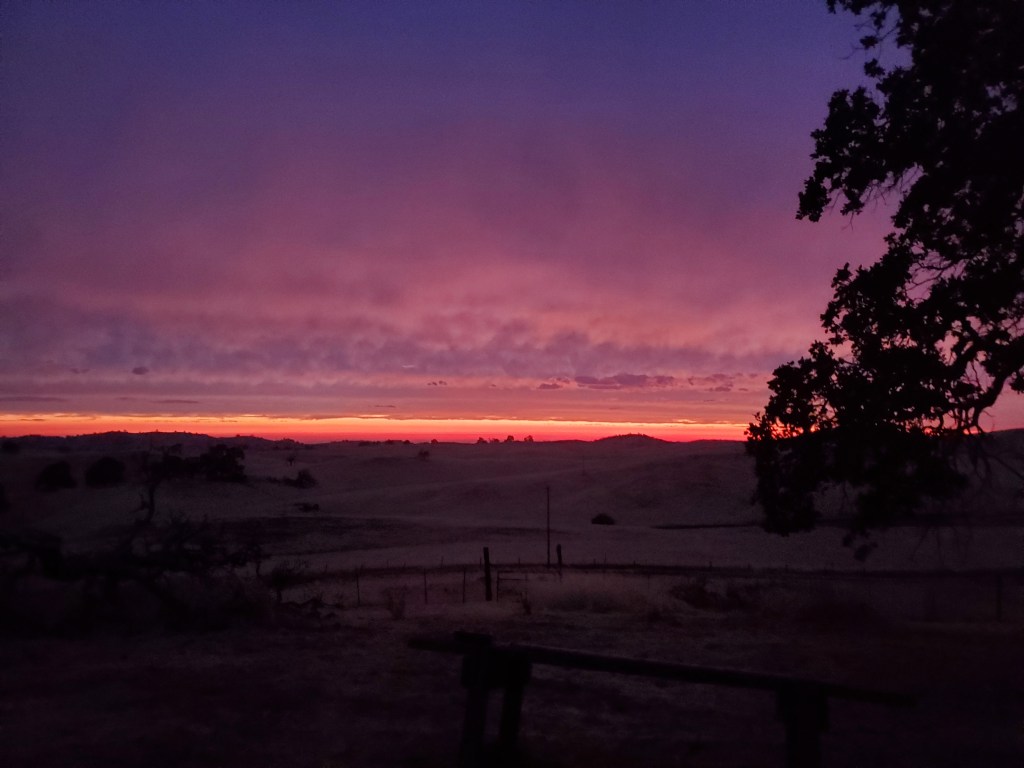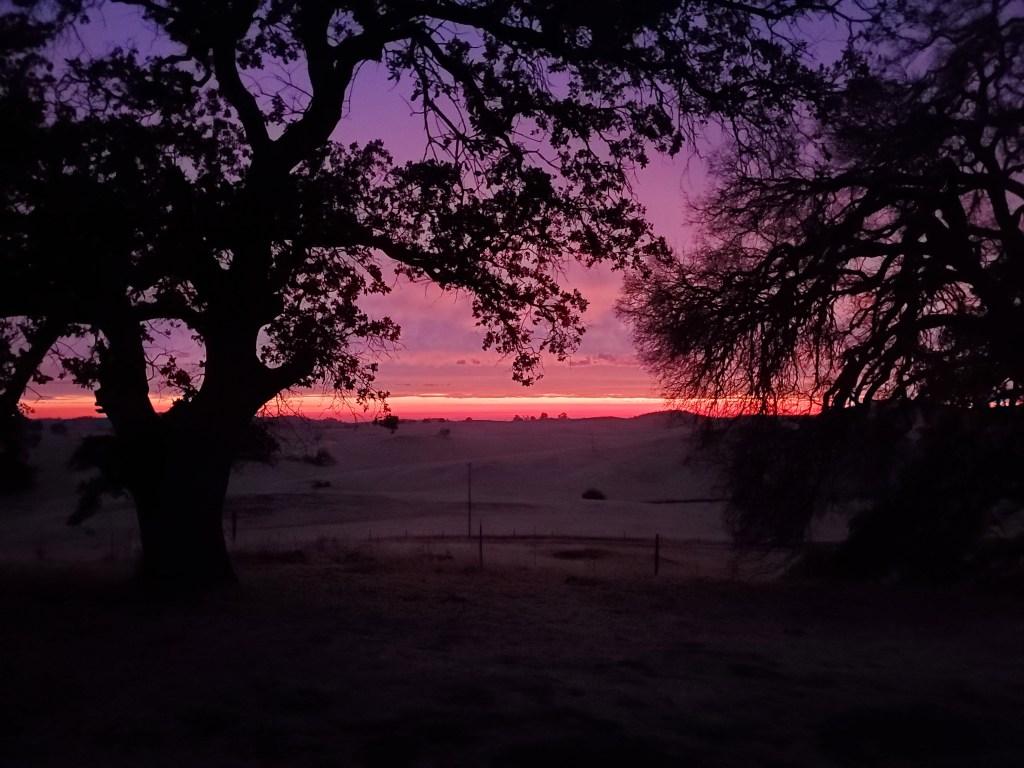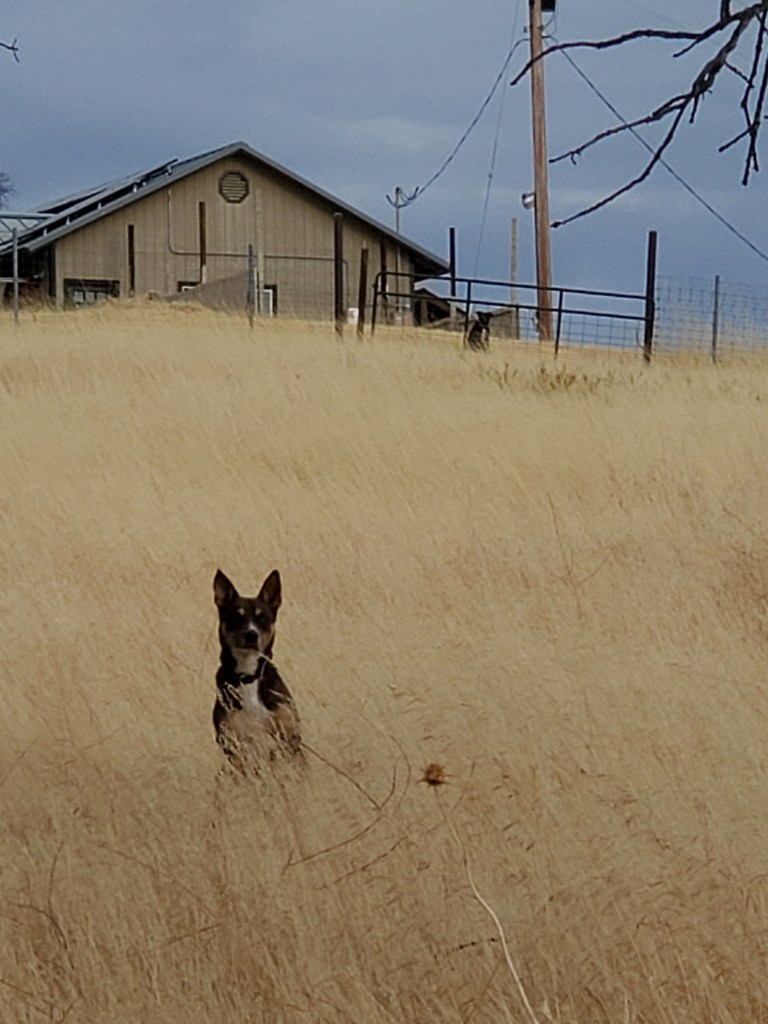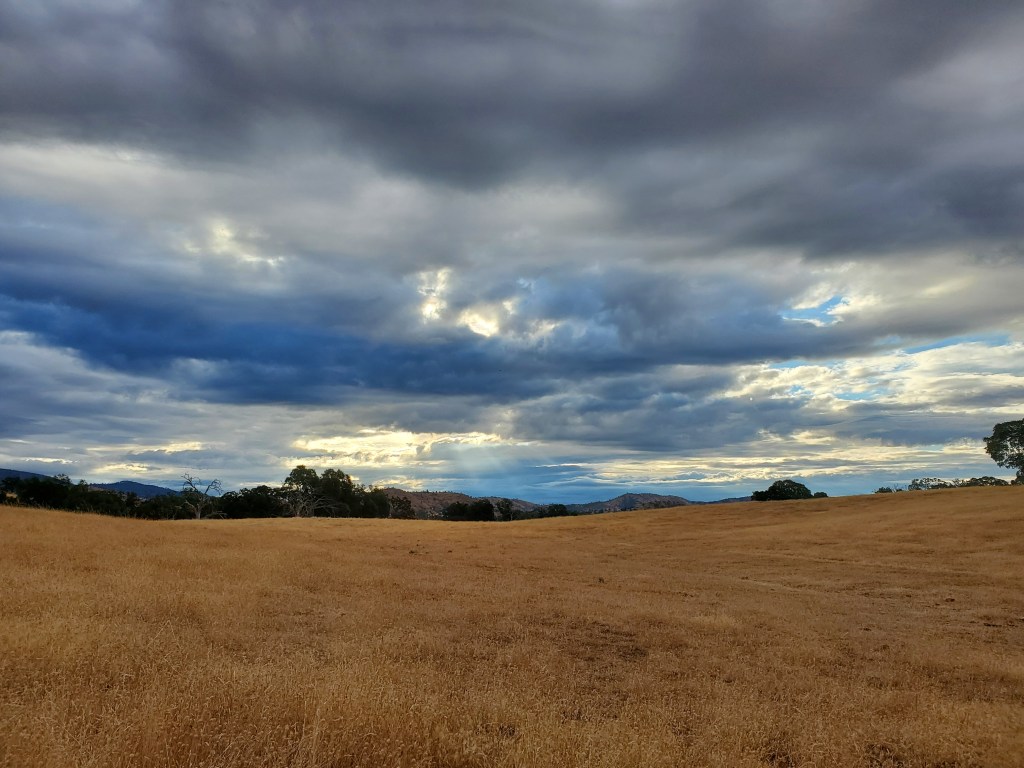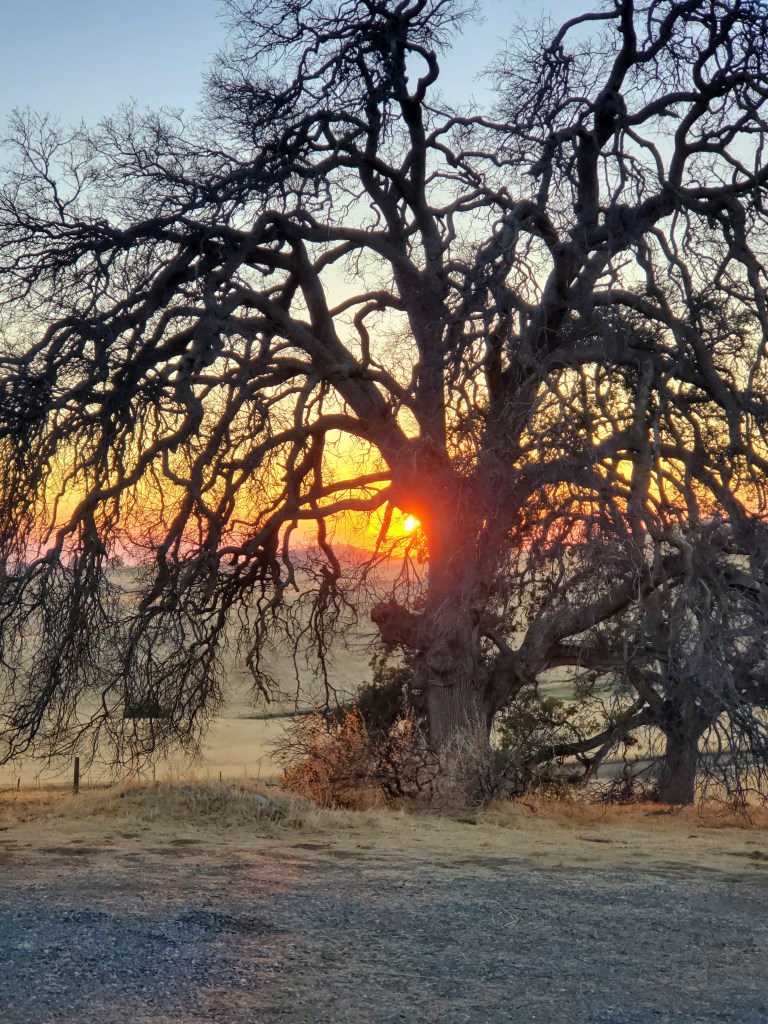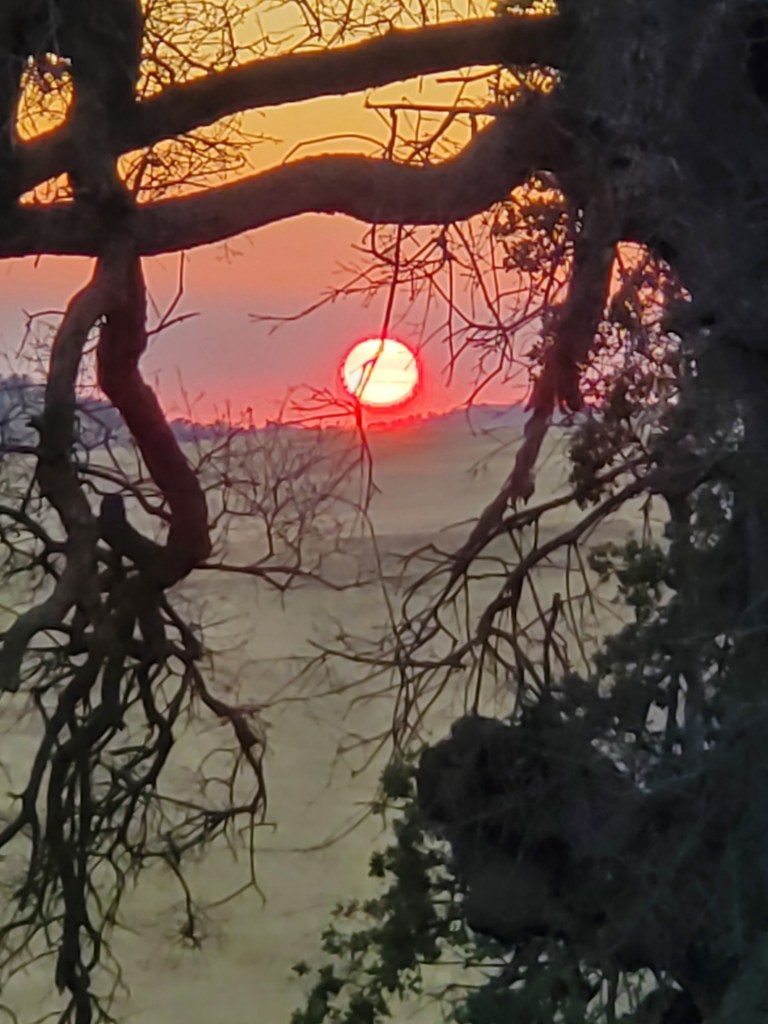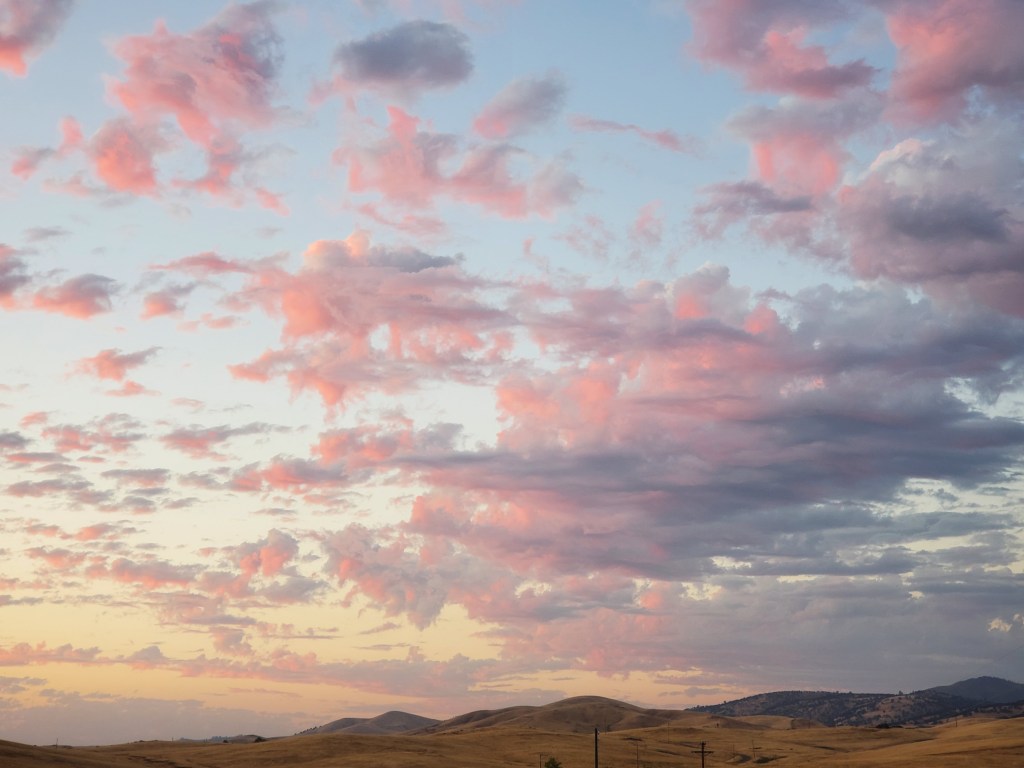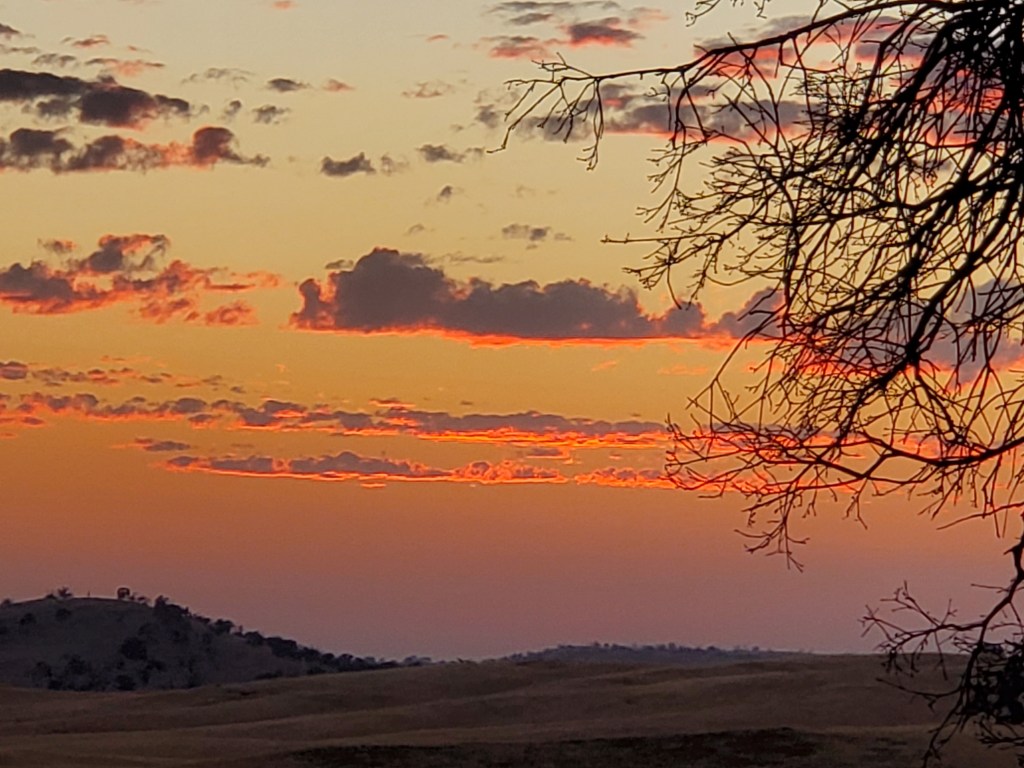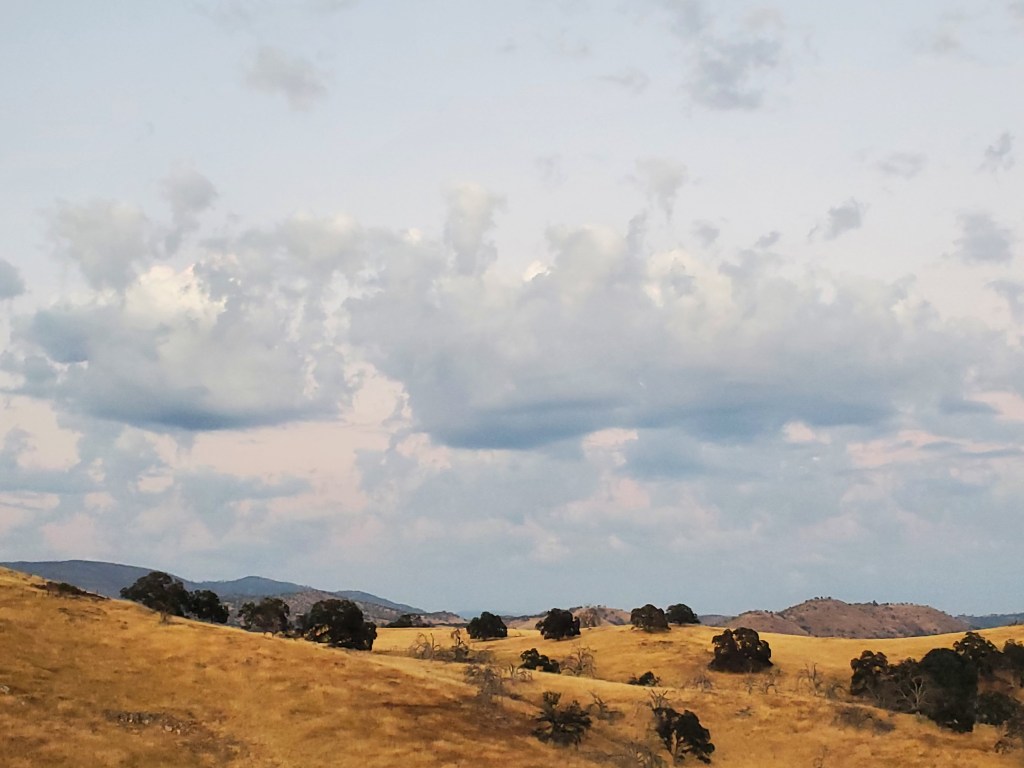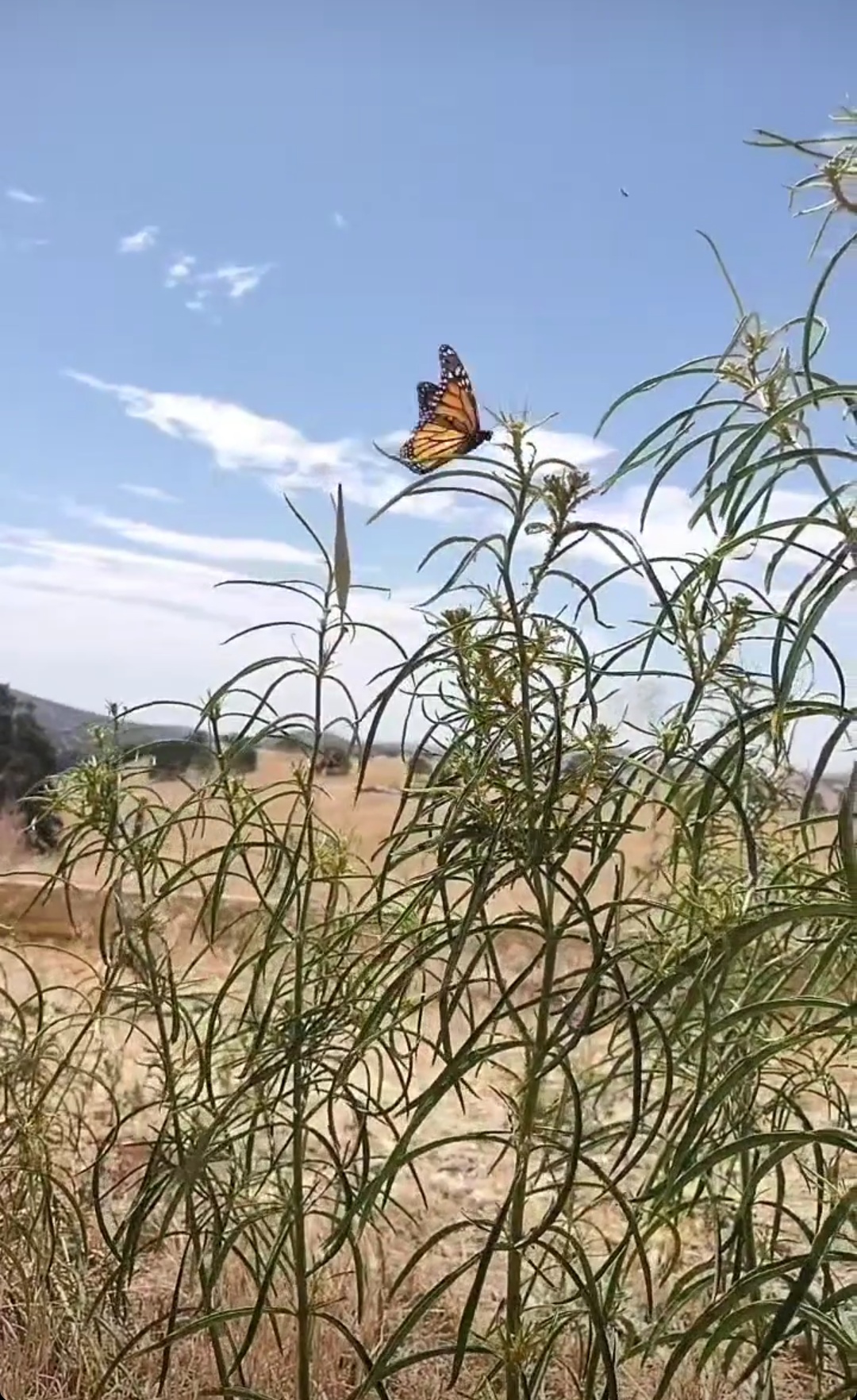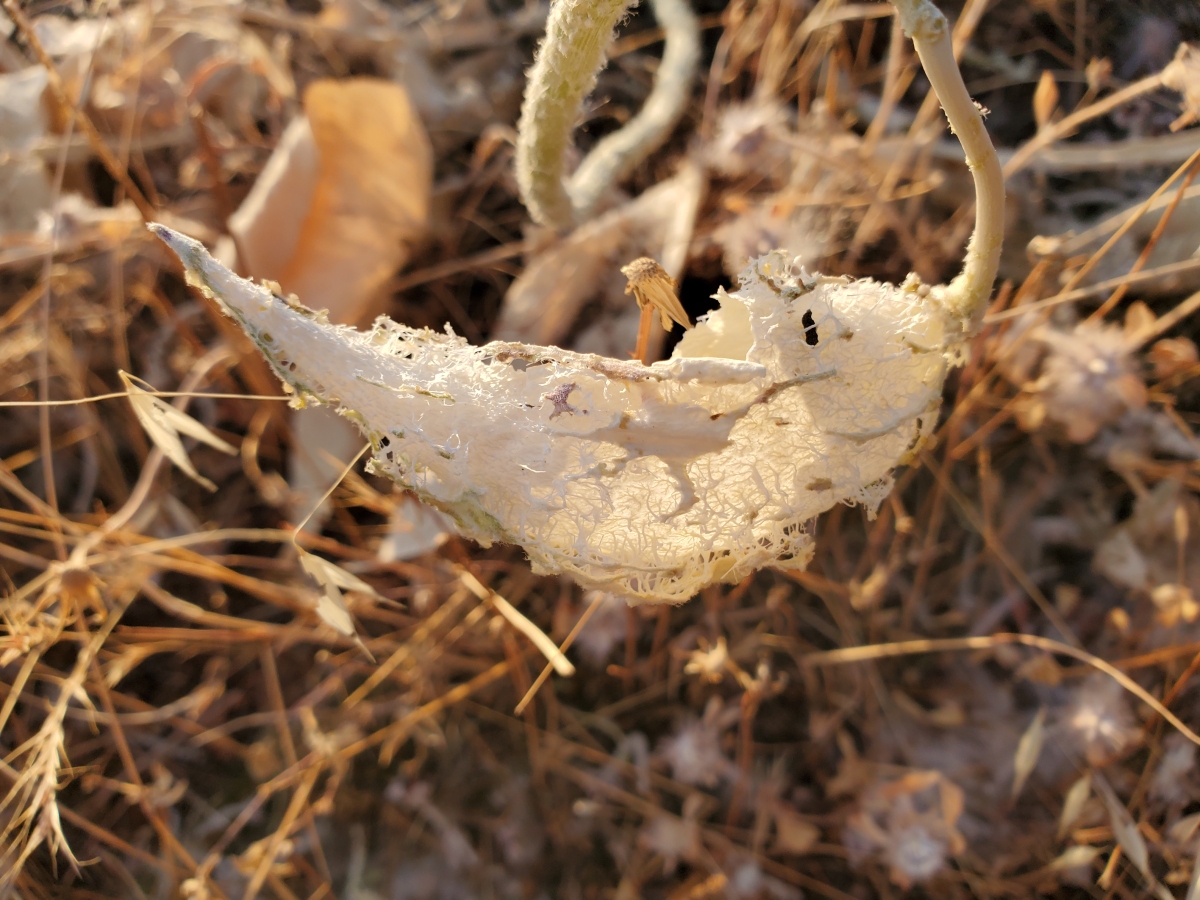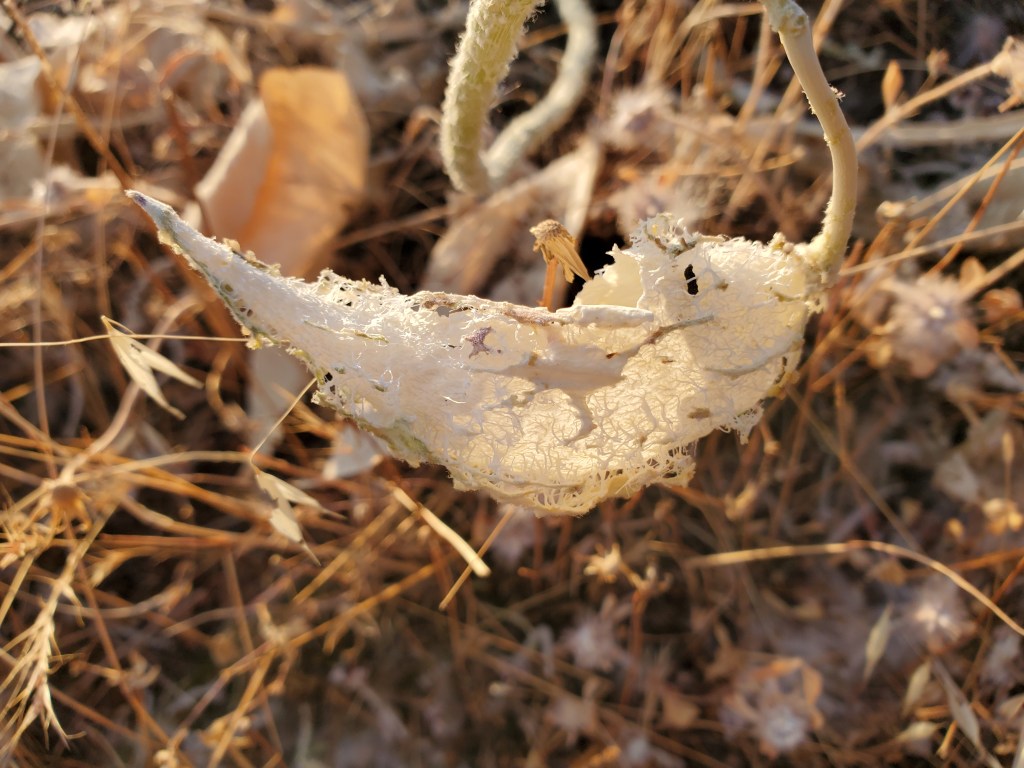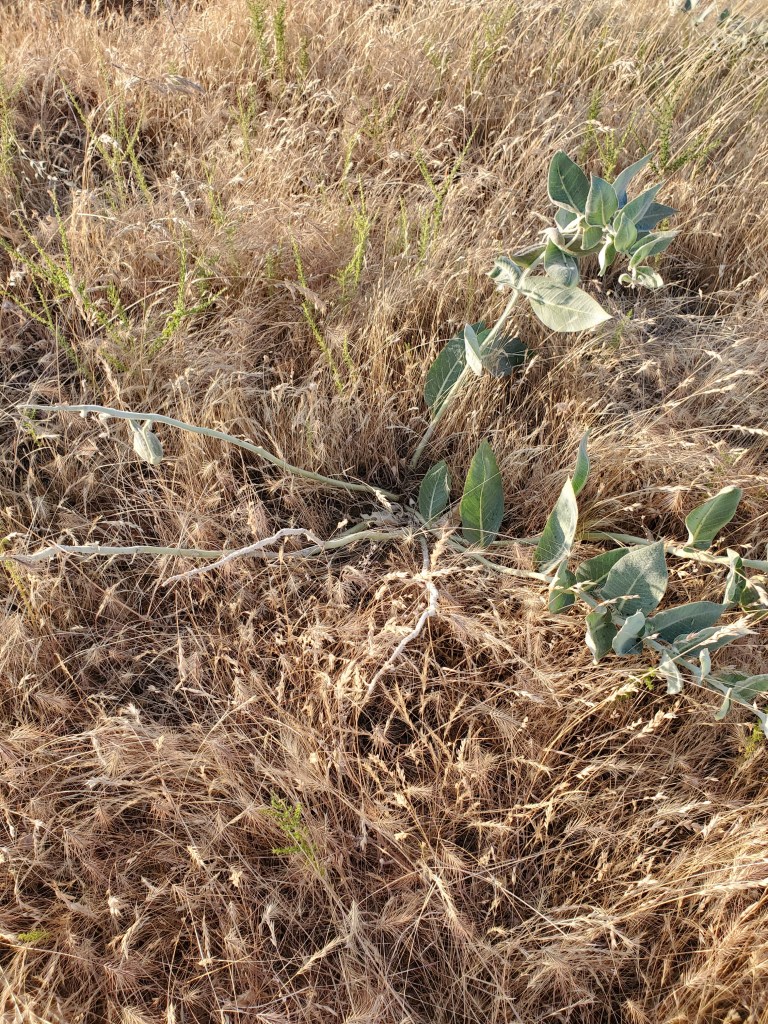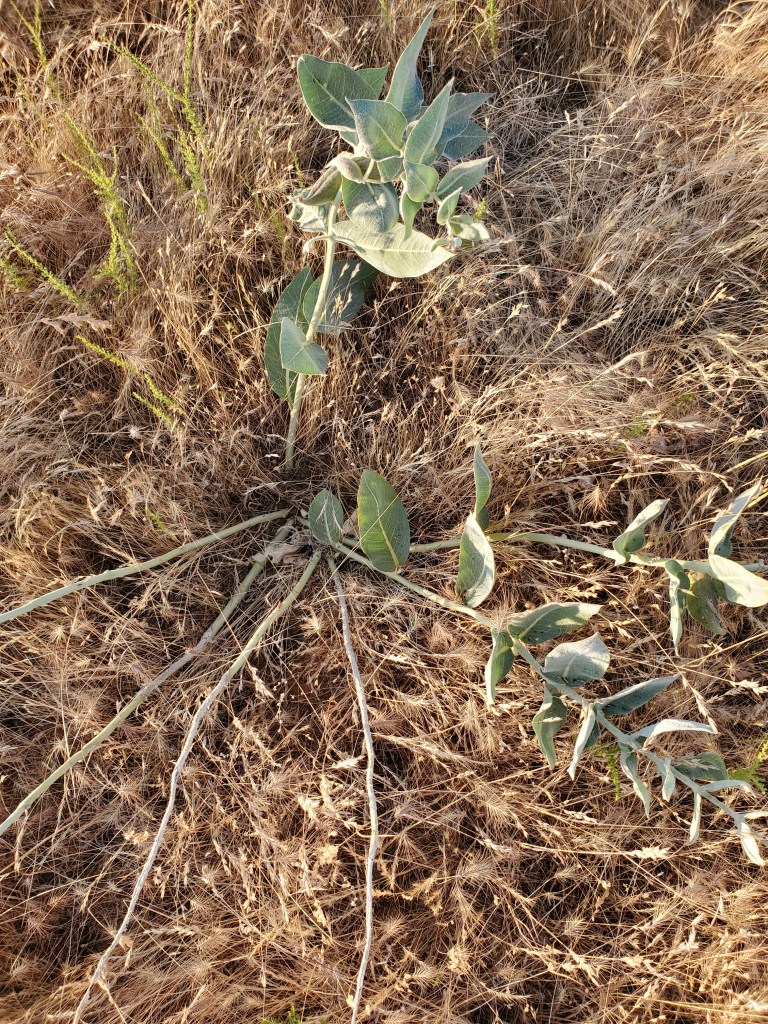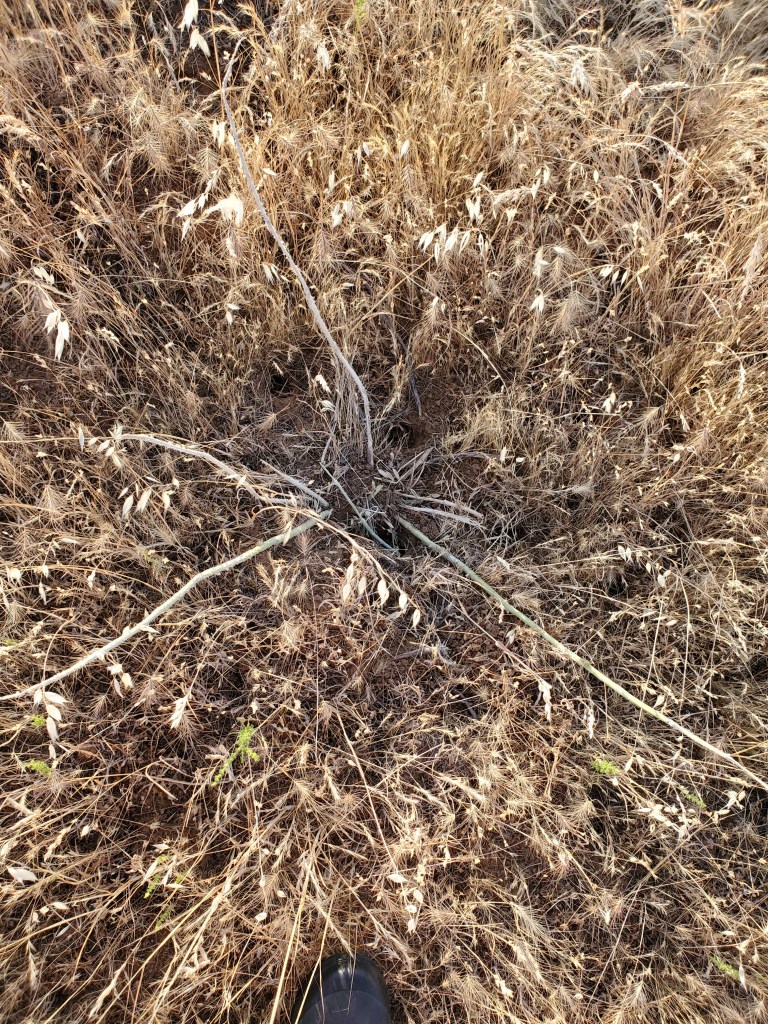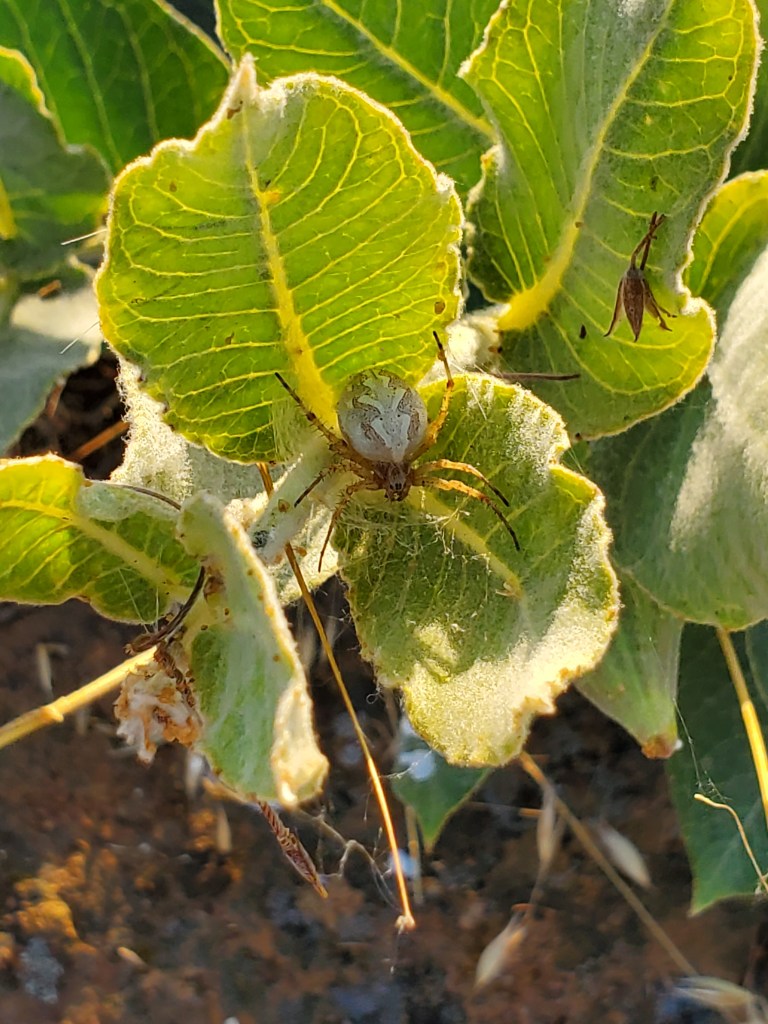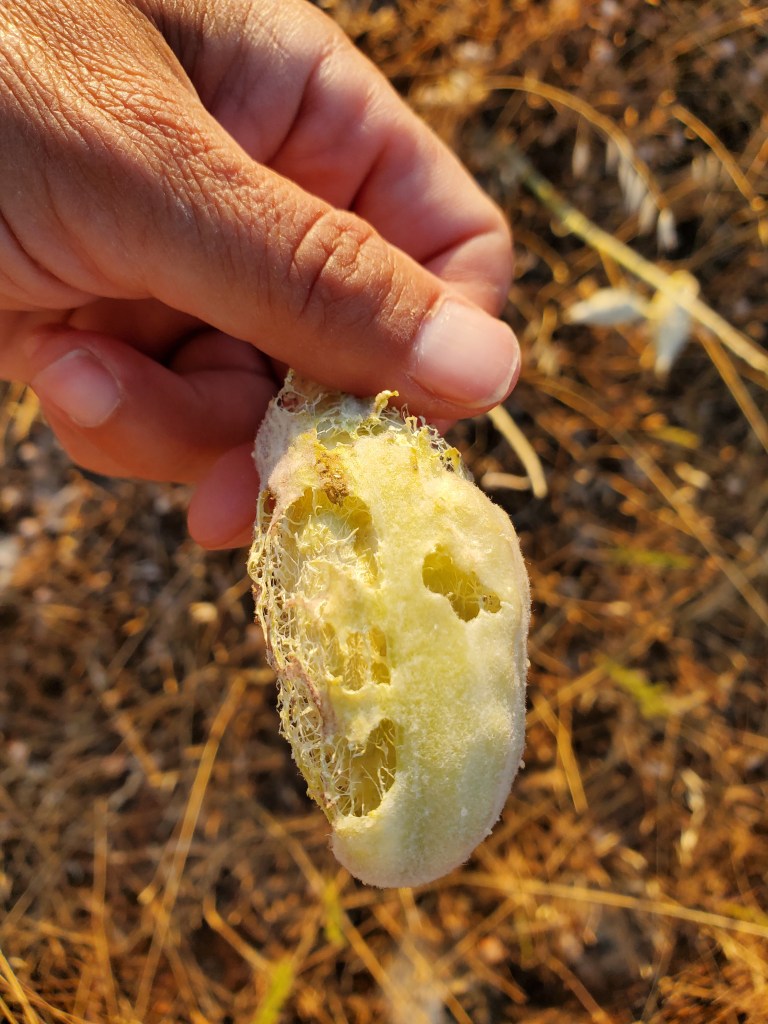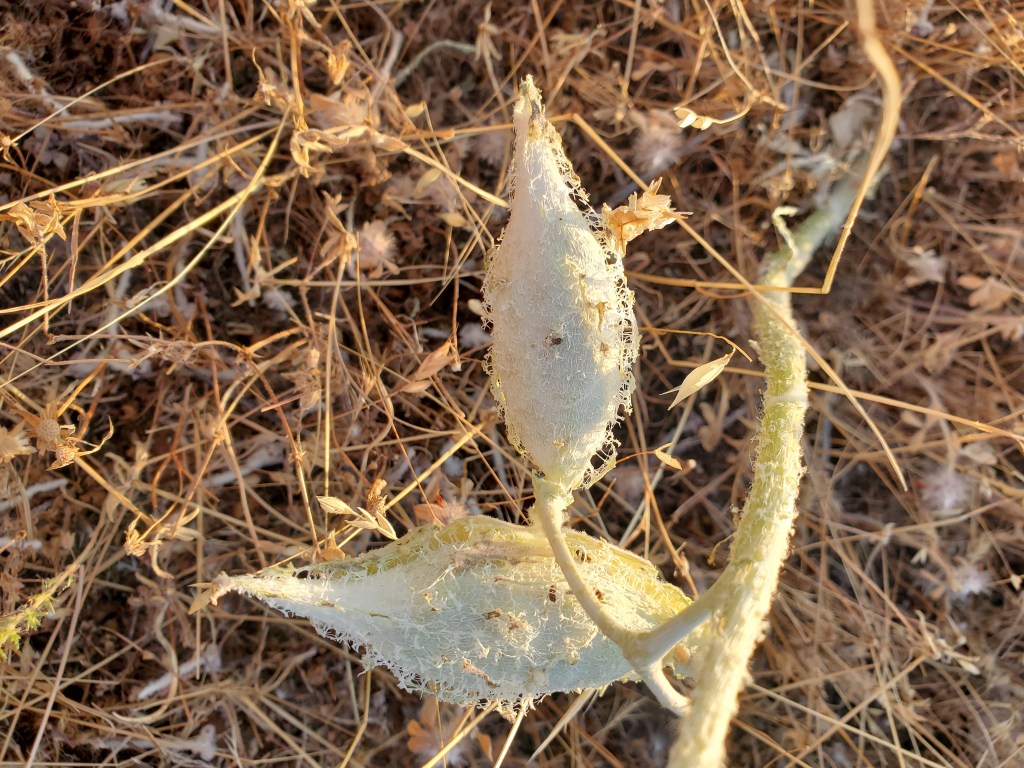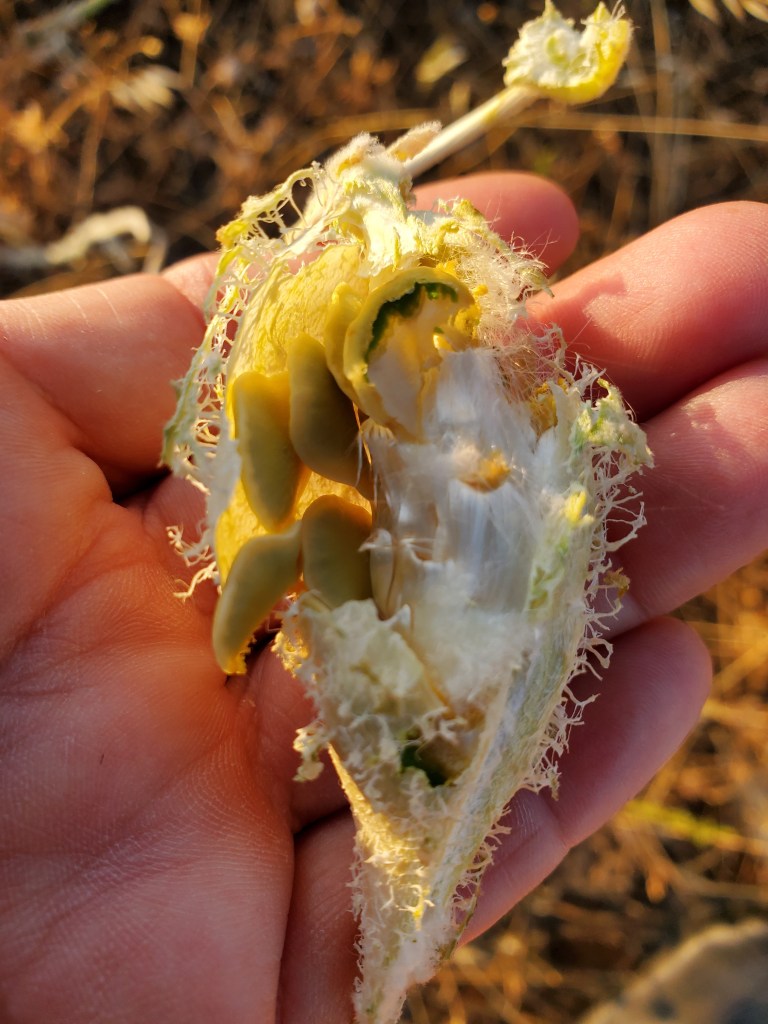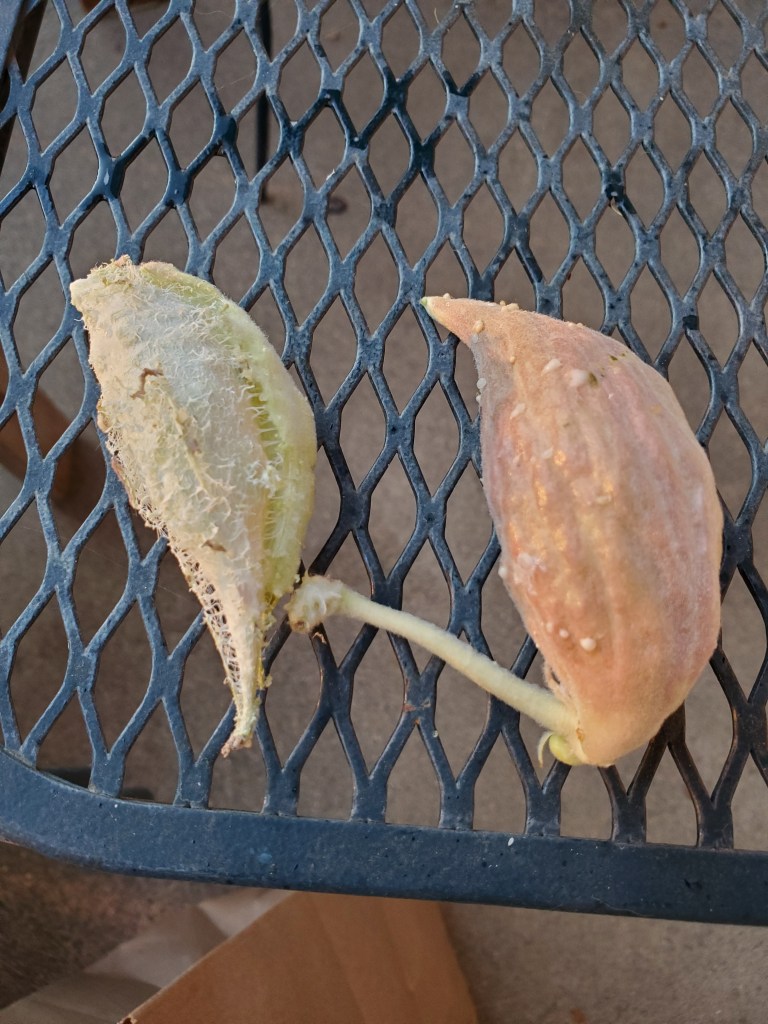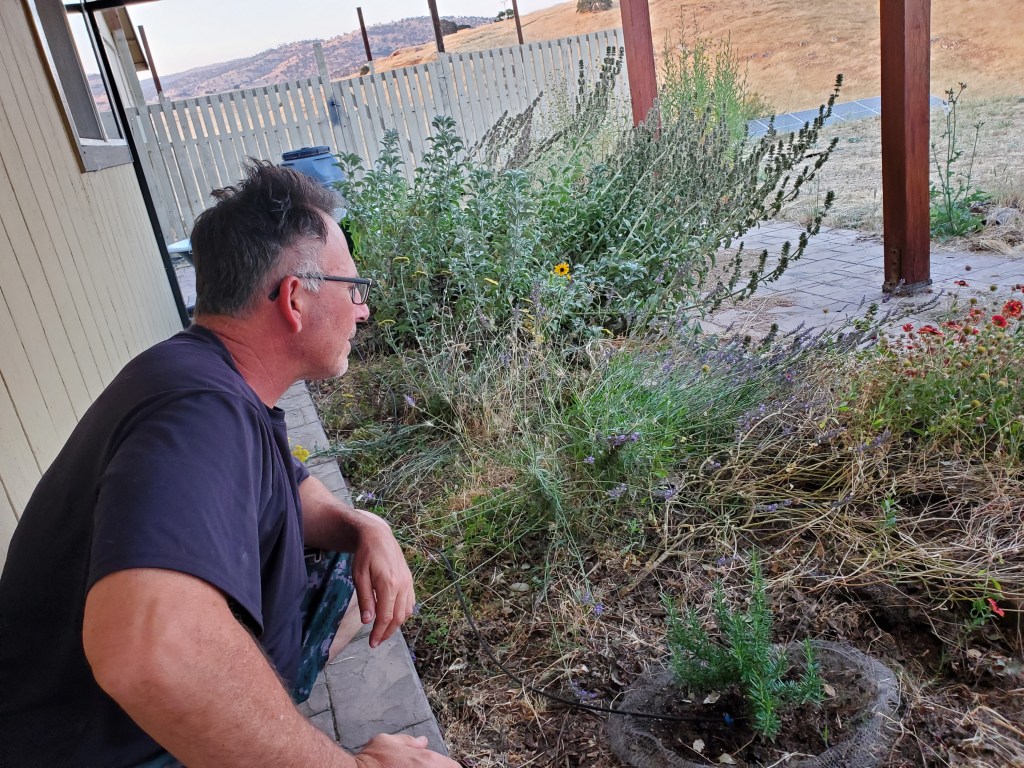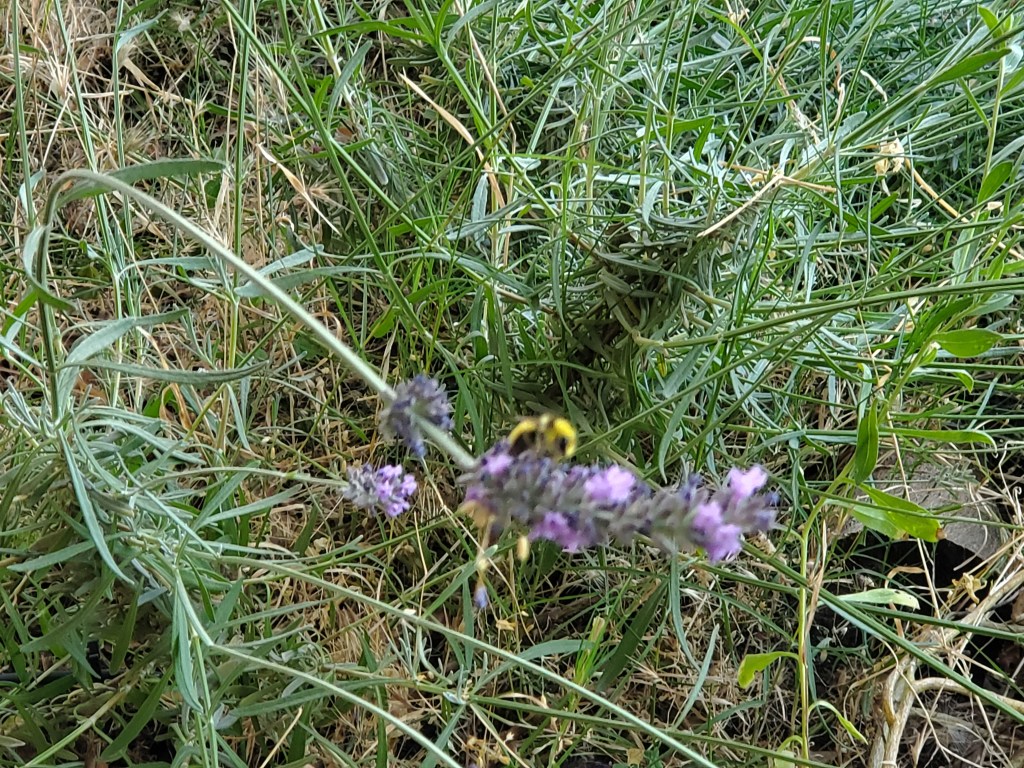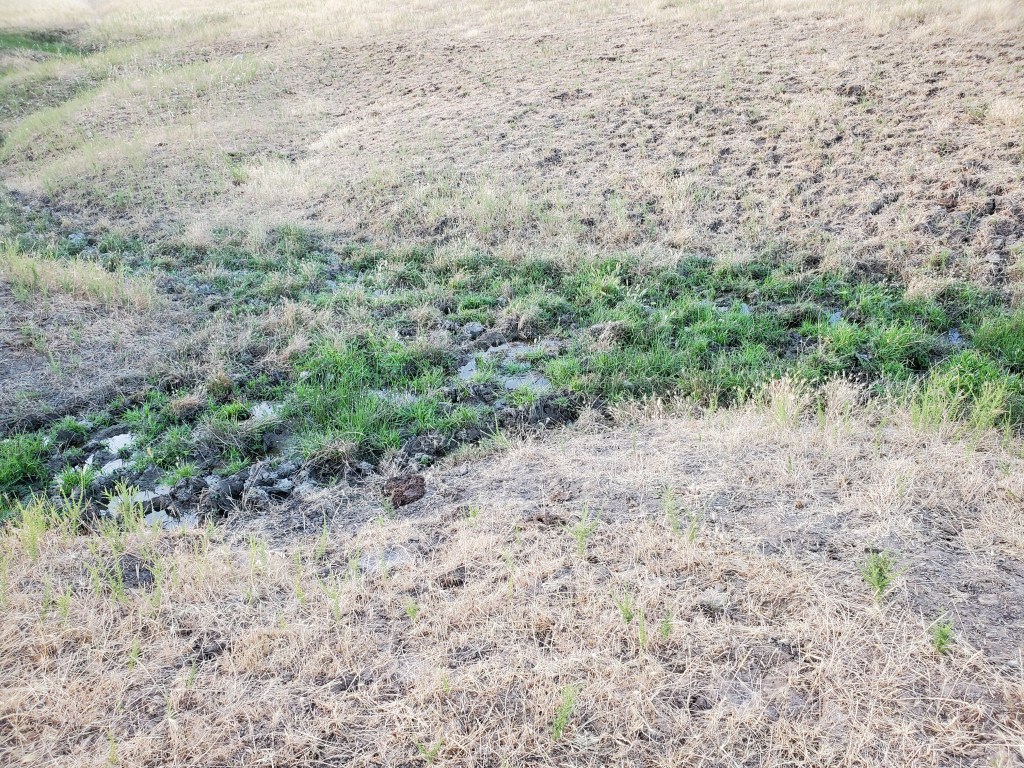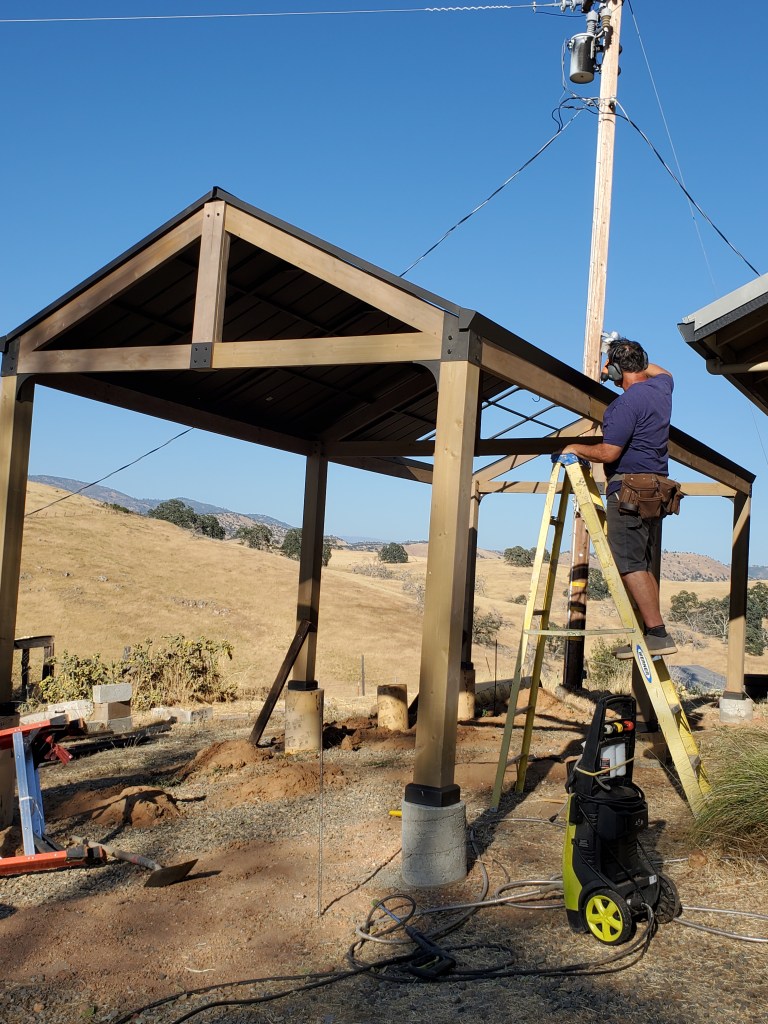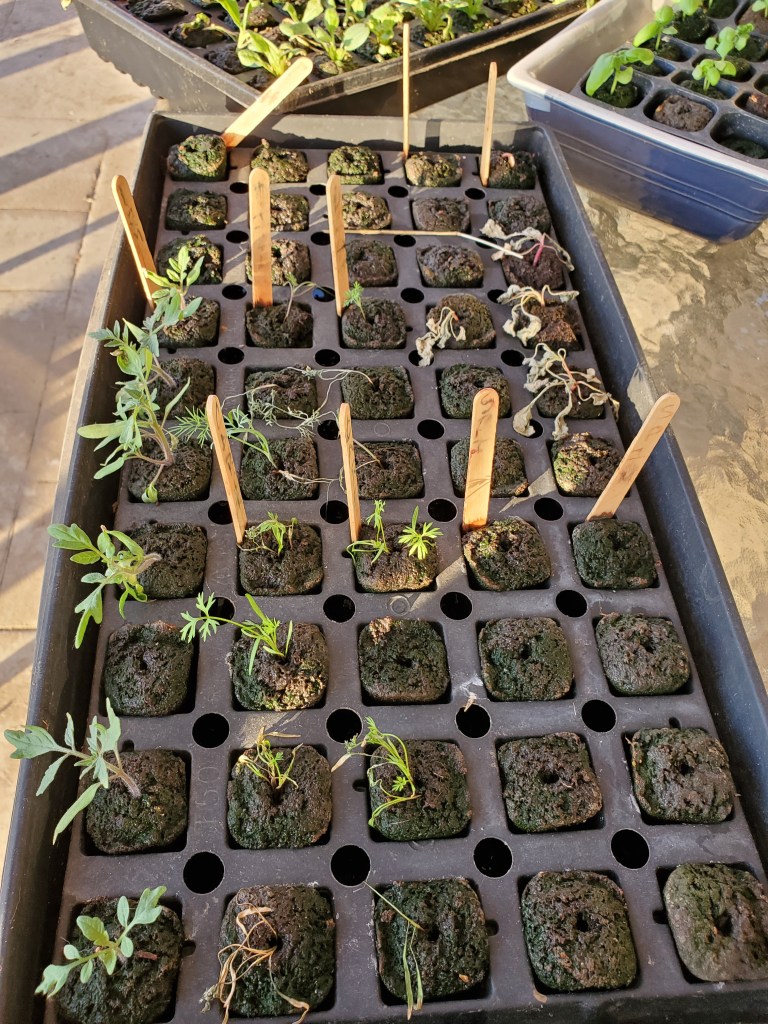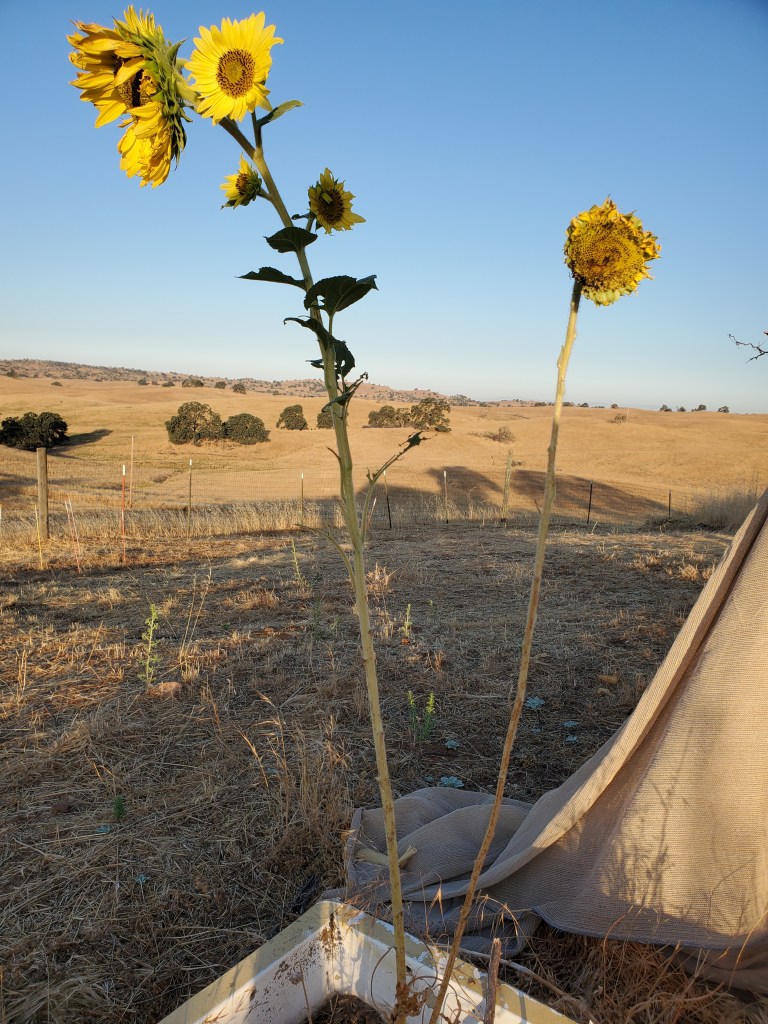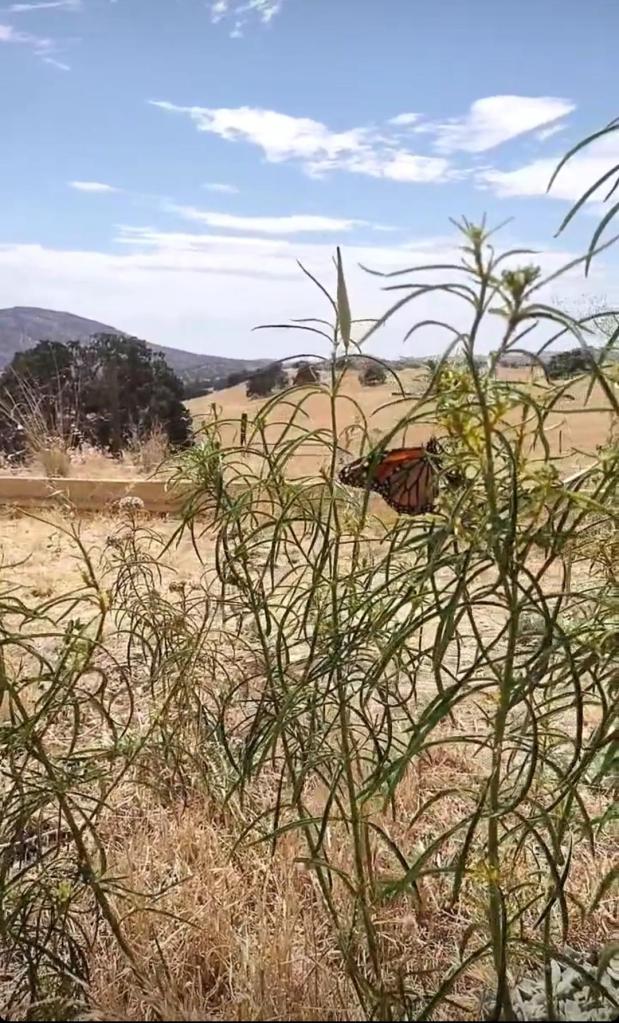



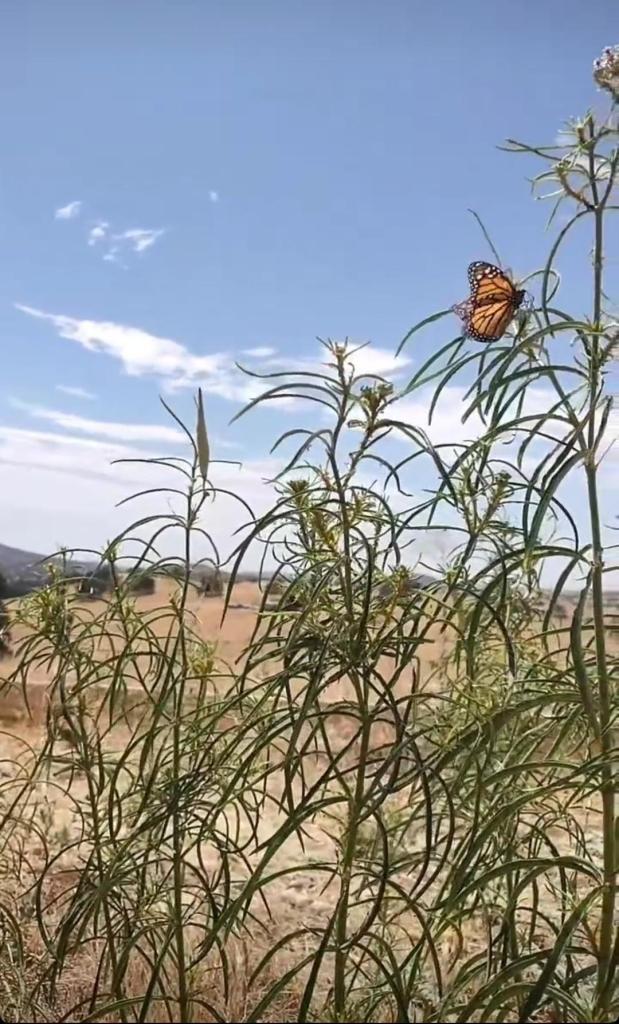
I had wondered if monarchs would just pass me by this year because there was so little left for them. In fact, I was sure they would. Well, I was wrong (add that to the very long list!). On Friday, August 11, a mama monarch came by and decided to lay her eggs on the only intact milkweed remaining on the hilltop habitat. As you may recall from my previous post, the tarantula hawks had been nectaring on this one large narrowleaf milkweed. This, essentially, saved it from being eaten to a stick by the grasshoppers.
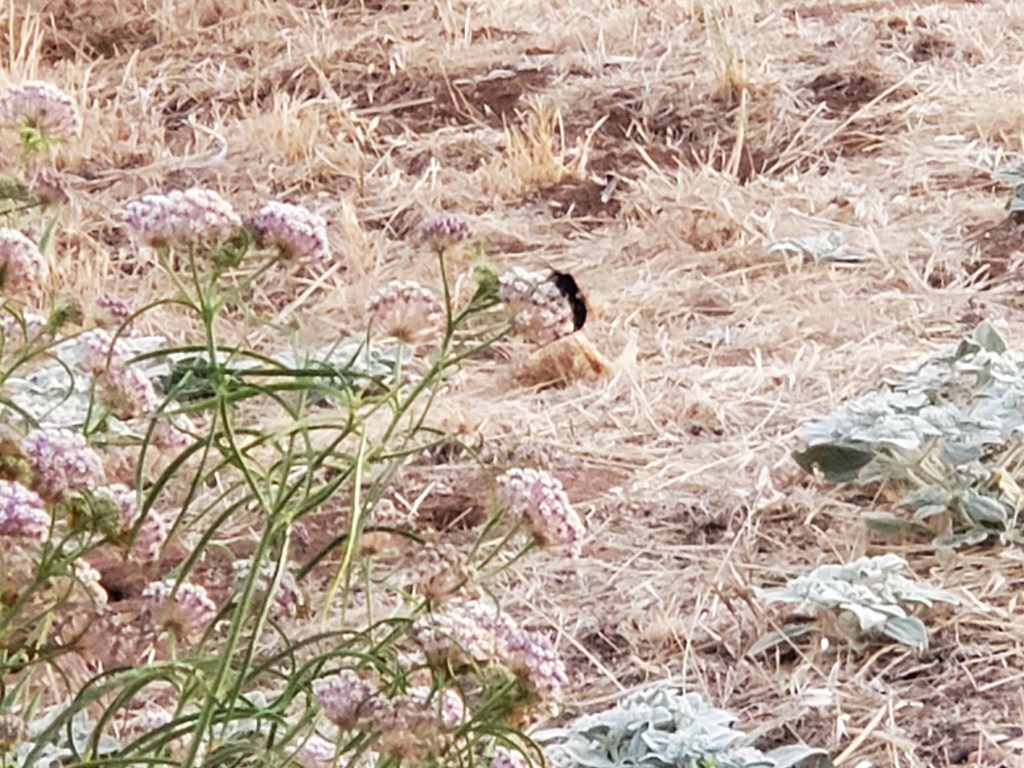

The monarch stayed around for about a week and laid more eggs on a couple other broadleaf (showy) milkweeds that had reemerged and were small. From what I learned, monarchs typically choose more mature plants for their eggs. In this case, she had limited options given the grasshopper incursion and chose smaller plants as well.
I wish I could say that I had a massive number of caterpillars, but I don’t. I am not sure what happened with the eggs. We got a very small impact from tropical storm Hilary, which dumped just under a quarter inch of rain in a short time. We’ve had swarms of dragonflies, a natural predator of butterflies. Ultimately, I don’t know why there are not multiple caterpillars. I look at the plants for evidence of eating and pooing, but daily, I see none.
I always appreciate people sharing their monarch sightings with me. There have been many more on their way back to the coast than there were heading northeast. There were 16 monarchs sighted in Catheys Valley off Highway 140. There were a couple more in the Mormon Bar area of Mariposa, one off Ben Hur Road and another near Midpines. I heard of several from Nellie in Yosemite this year as well. I always ask people to upload their sightings to westernmonarchmilkweedmapper.org. When I look at the map, I don’t see everyone’s entries, but it is possible they marked them to be private. When I find and upload california milkweed sightings, I mark those as private to prevent poaching. Believe it or not, some jerk took a California milkweed several years ago from a county trail area. Since that incident was reported by a friend, I have been very cautious.
Plants Come Back

Most people do not think of the end of summer as a time of plant growth. Here, at the ranch, regrowth is all around. While it still looks like a fire went through, with all the stripped, empty sticks that were once full, bushy plants, small sprouts of green along a branch or at the base are becoming visible. Close to 80% of the habitat has some regrowth. I am still waiting to see a spot of green in several other areas, but need to be prepared that those plants may not have been mature enough to withstand the grasshopper binge eating.
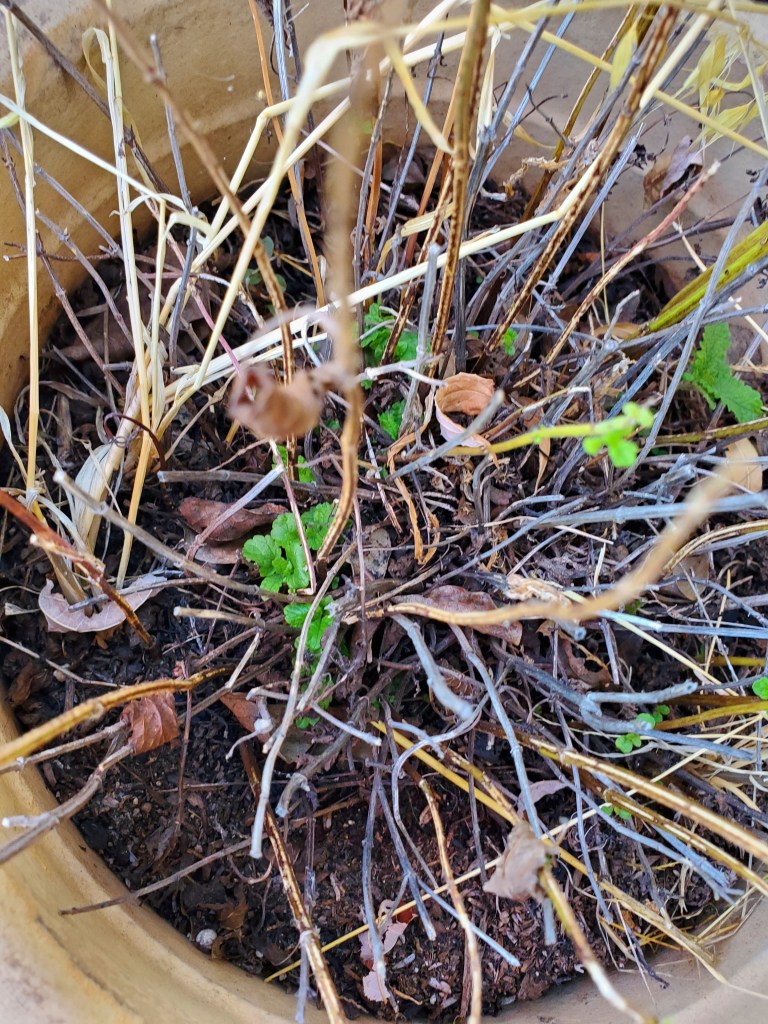
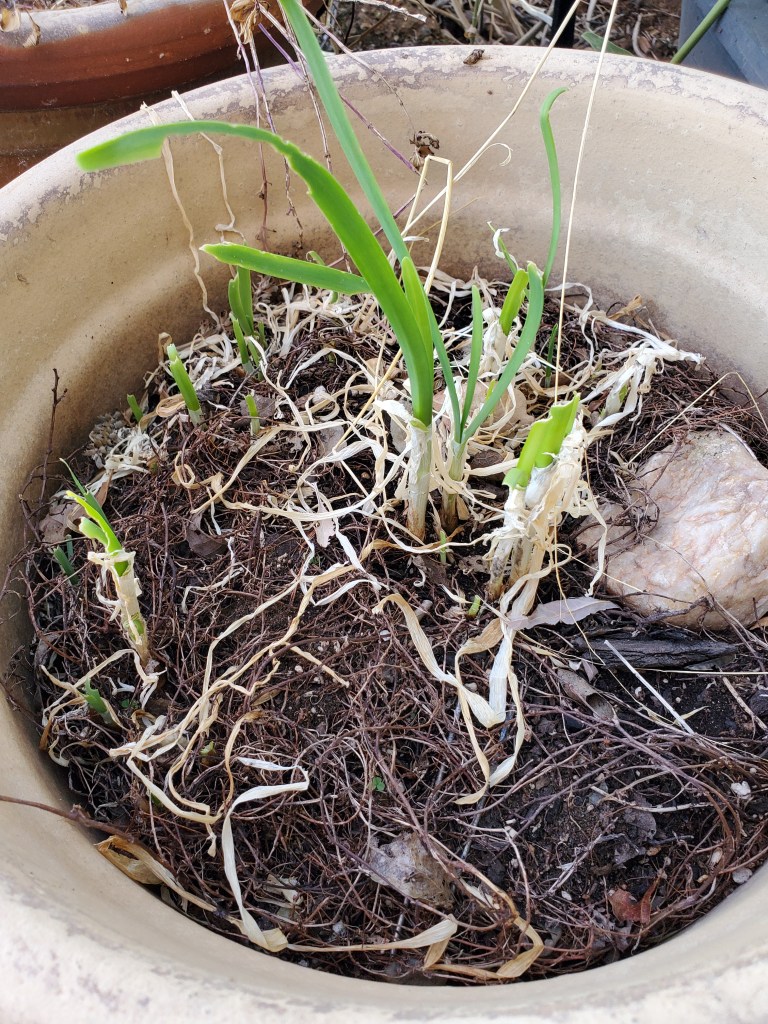

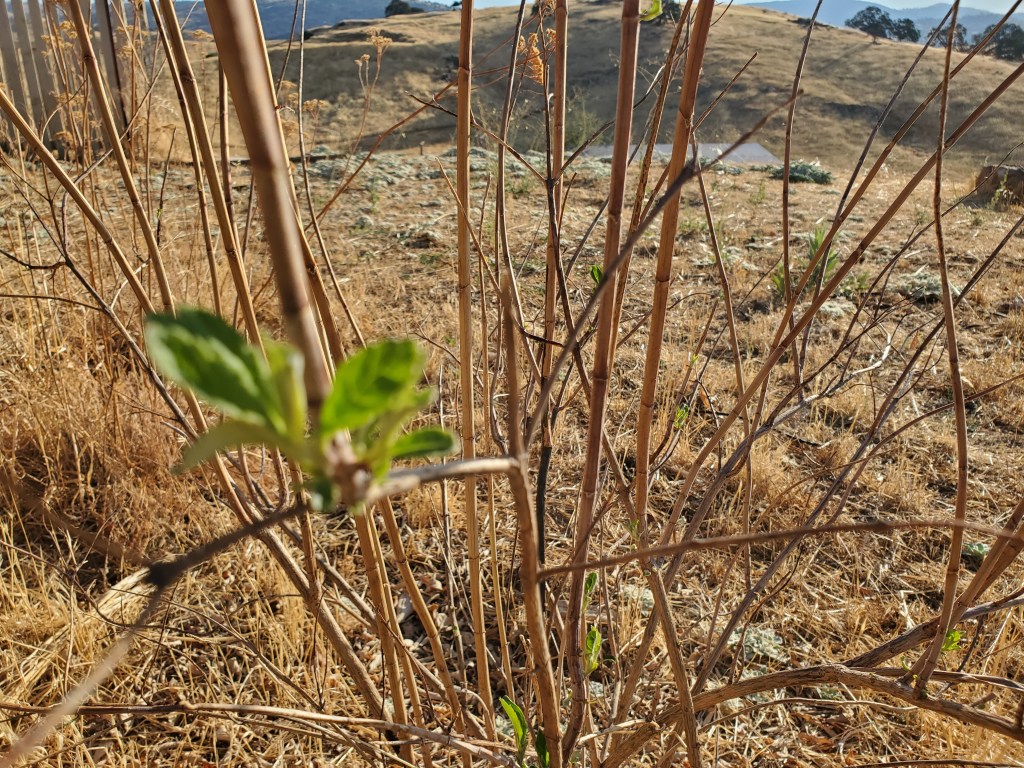
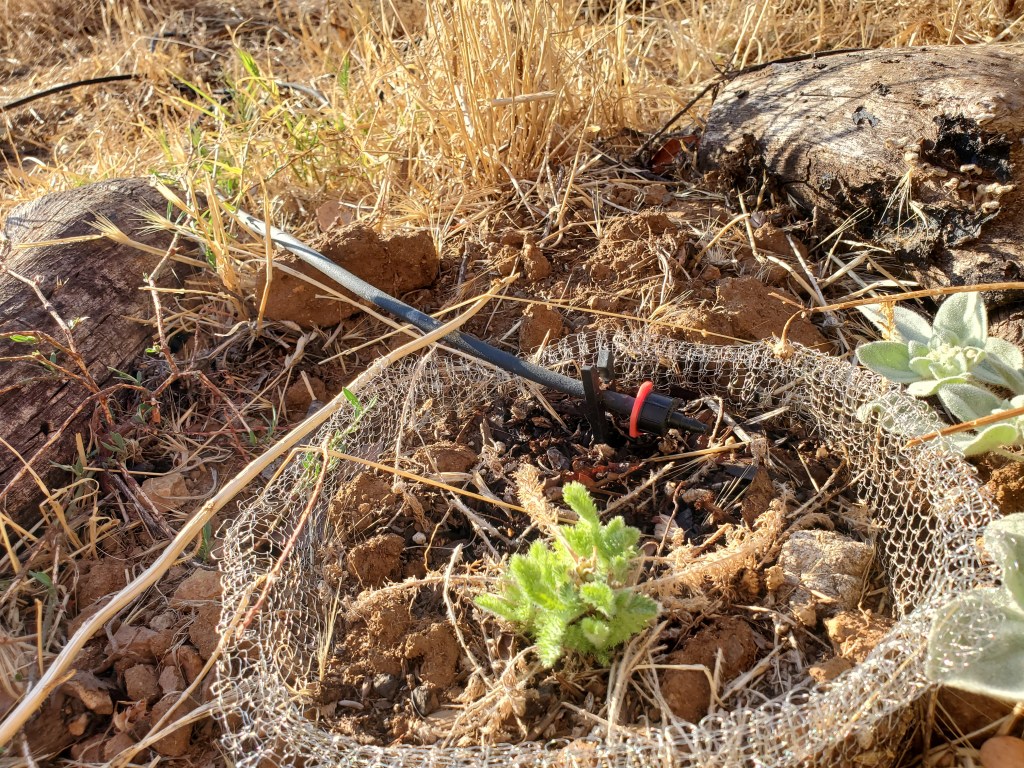
For now, the hoppers are mostly gone from the top of the hill where the largest habitat installations are. They continue to be profuse in patches of ground downhill on the west end of the ranch.
Many of the seedlings I raised have grown large now. I had to re-pot them as I waited for the hopper incursion to abate. Now, I feel comfortable planting them in the garden bed. Still, I am keeping my fingers crossed that the hoppers will not recirculate back here.
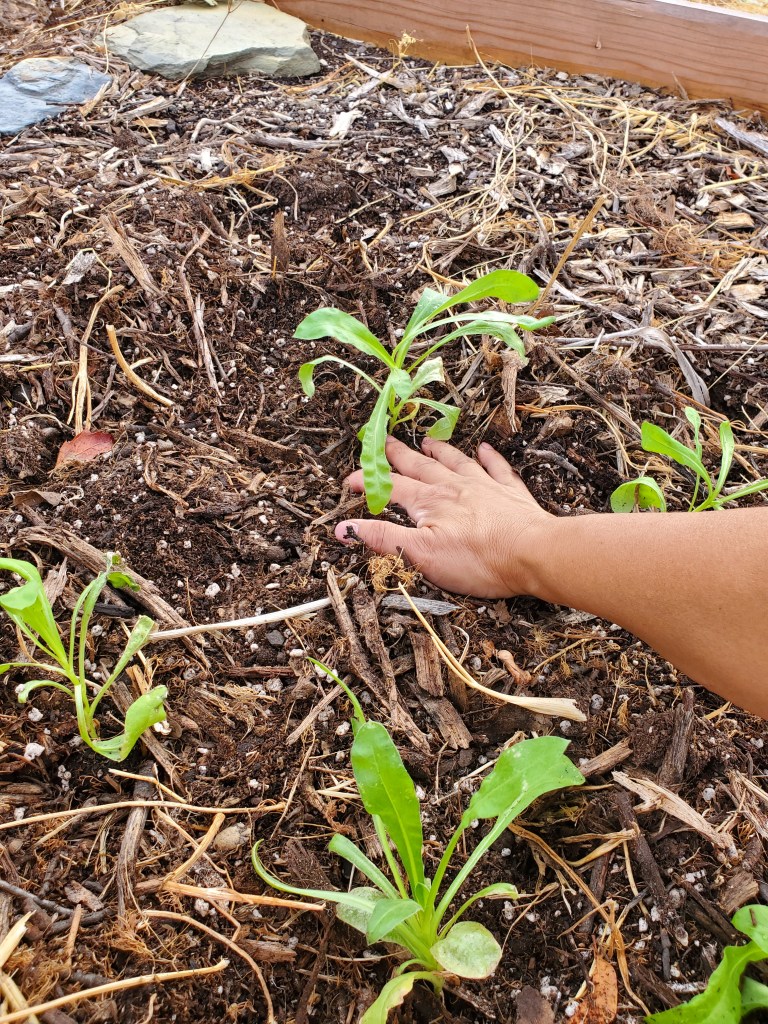



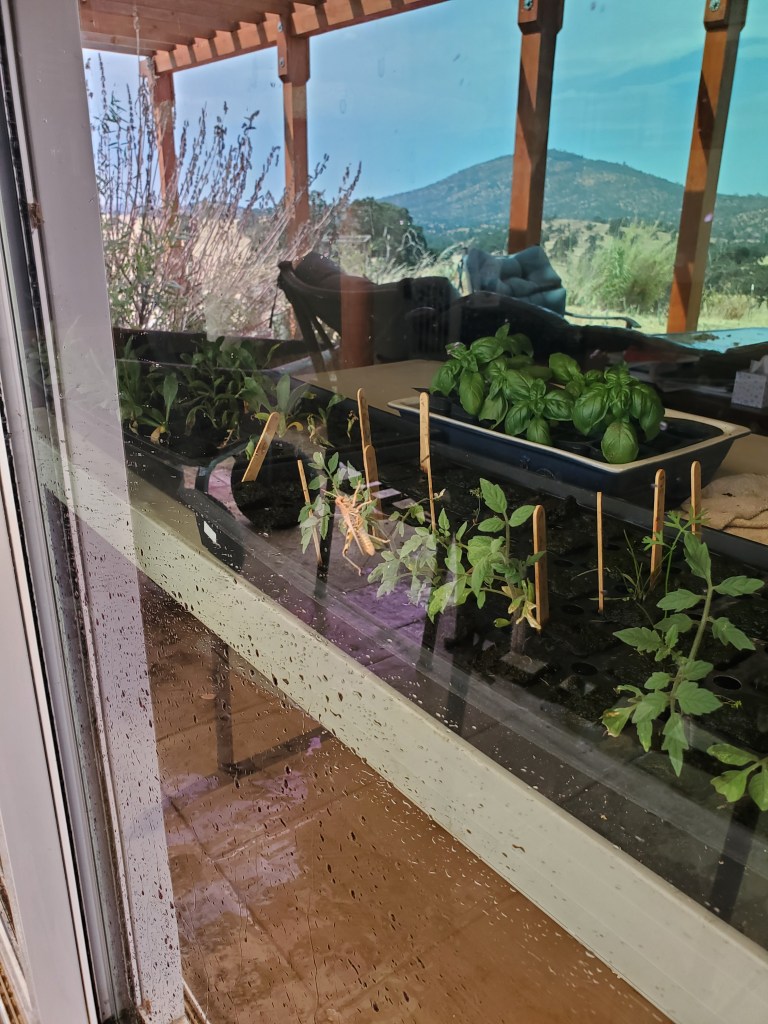
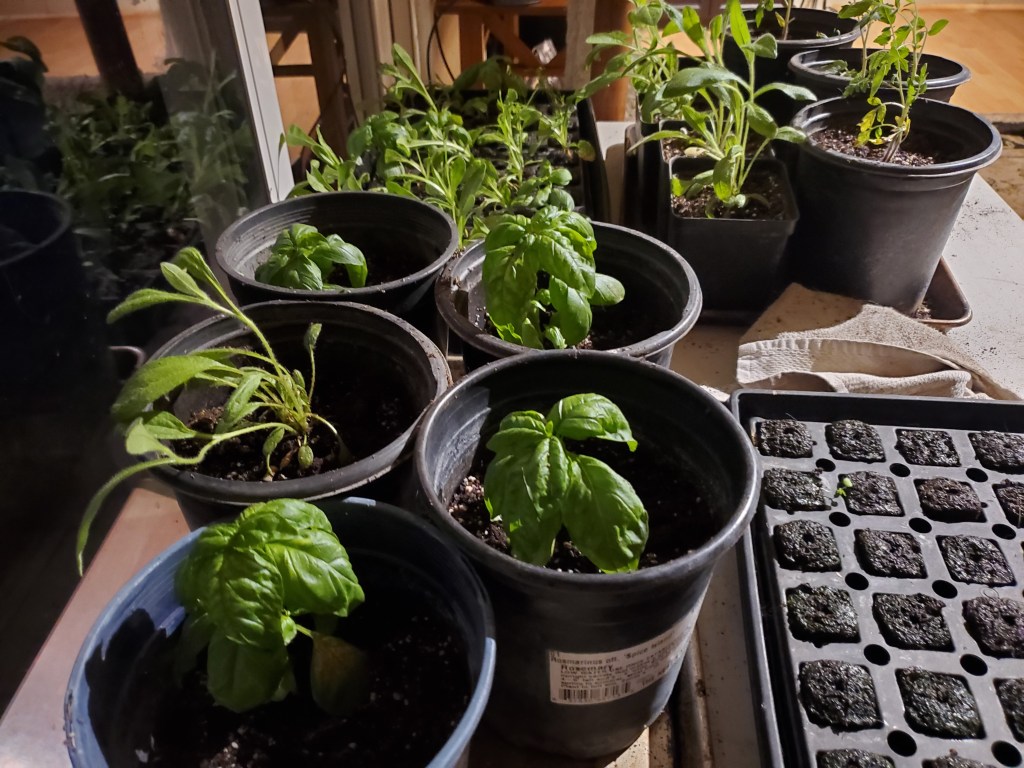
New Habitat Endures
Playing in the creek has paid off. I didn’t think the small rock check dam would be that helpful, but it has promoted sediment and moisture retention. There are spots further upstream that may have retained water given the significant rain (versus my check dam). What is exciting is that the span of these areas have connected and have created a lovely ecosystem with wildflowers that stayed through the summer, puddles, grasses, and other plants. It has allowed for a cool area with ongoing nutrients for a variety of life. I saw large, gorgeous dragonflies there, with stripped wings and some with stripped bodies and black and white wings. I also came upon a small bevvy of quail living in the roots of trees in the grove at the north end of this area. They undoubtedly use the standing water and consume the bugs this area attracts. It is all really beautiful. I am so proud.
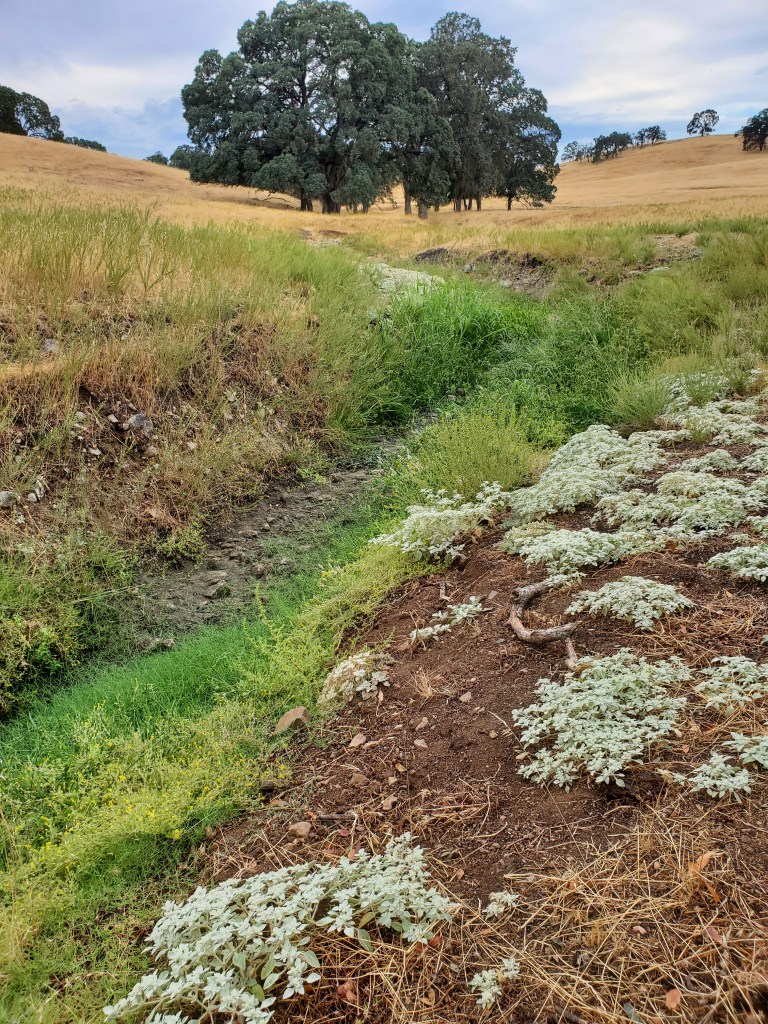





Creatures Make a Home Everywhere
When I used to travel for work, I remember sometimes feeling very alone as I returned to my hotel room. It would cheer me up to see an insect that made it through the cleaning process. A spider handing in a corner or another small bug climbing around a basin would bring me such peace. I know that may sound strange, but to know that there is another life there with you, it is comforting. There is certainly not a lack of life on the ranch. Everywhere you look, there is something making a home, passing through or chattering for turf. Lately, I see a proliferation of gall wasp eggs, seemingly on every oak , webbed holes in the ground, bird tracks, coyote scat. The dragonfly population is large this year. I am seeing swarms of approximately 80+ whipping around the sky above me. It is no wonder I am so comfortable here and make this place my home.
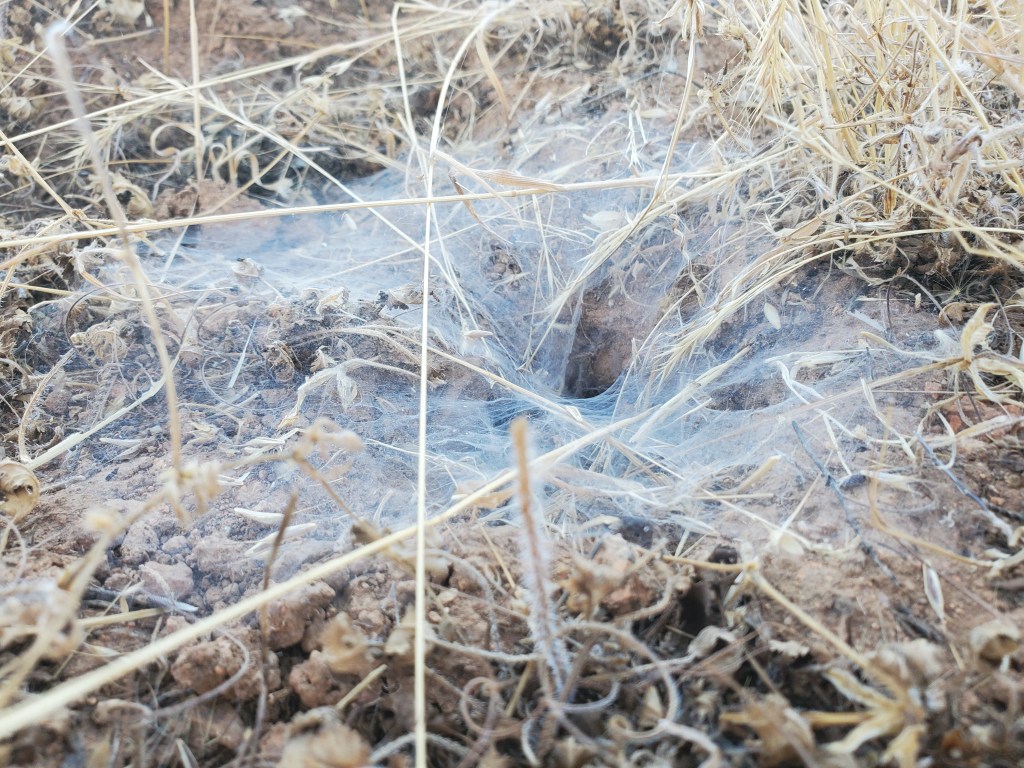

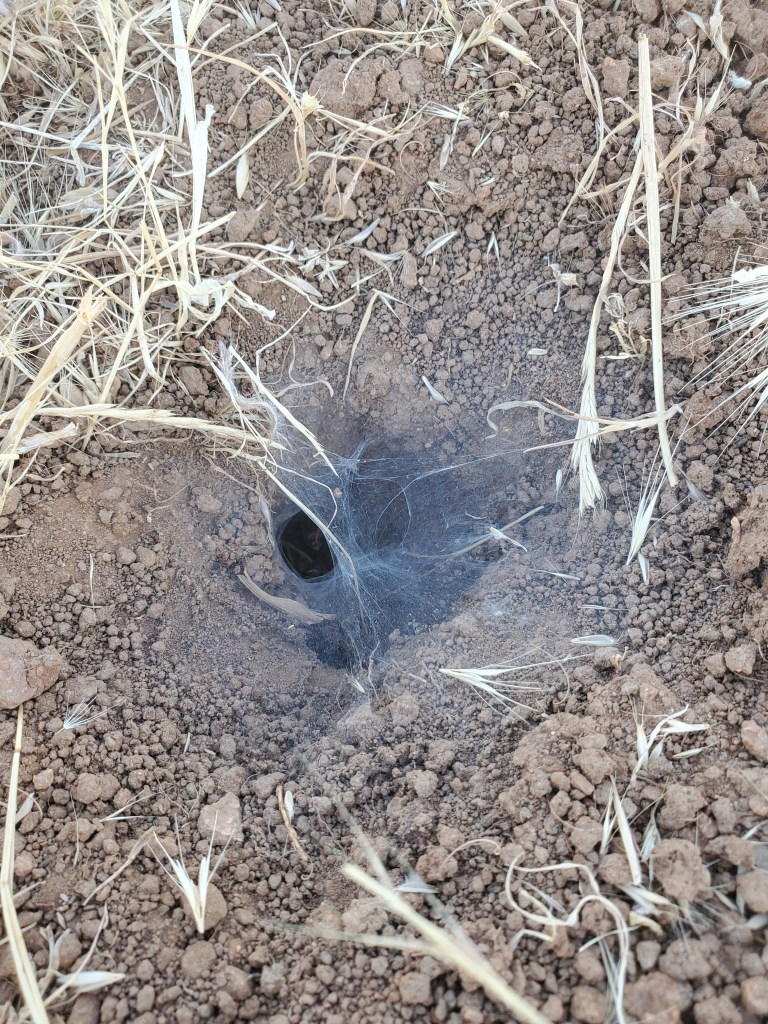

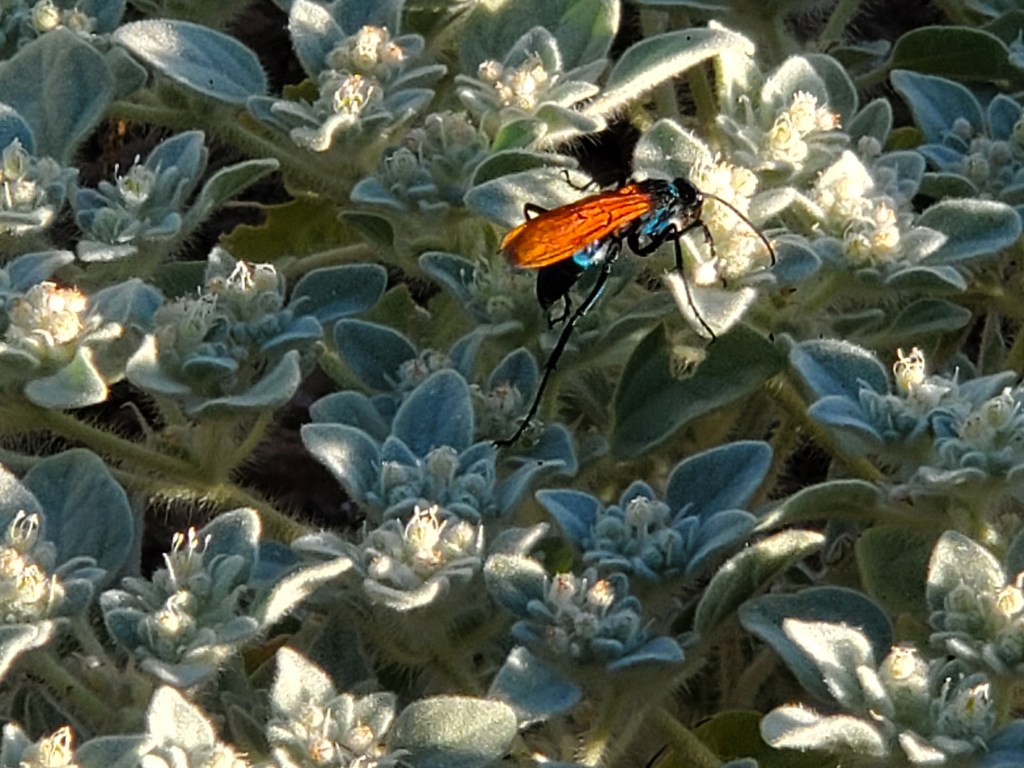


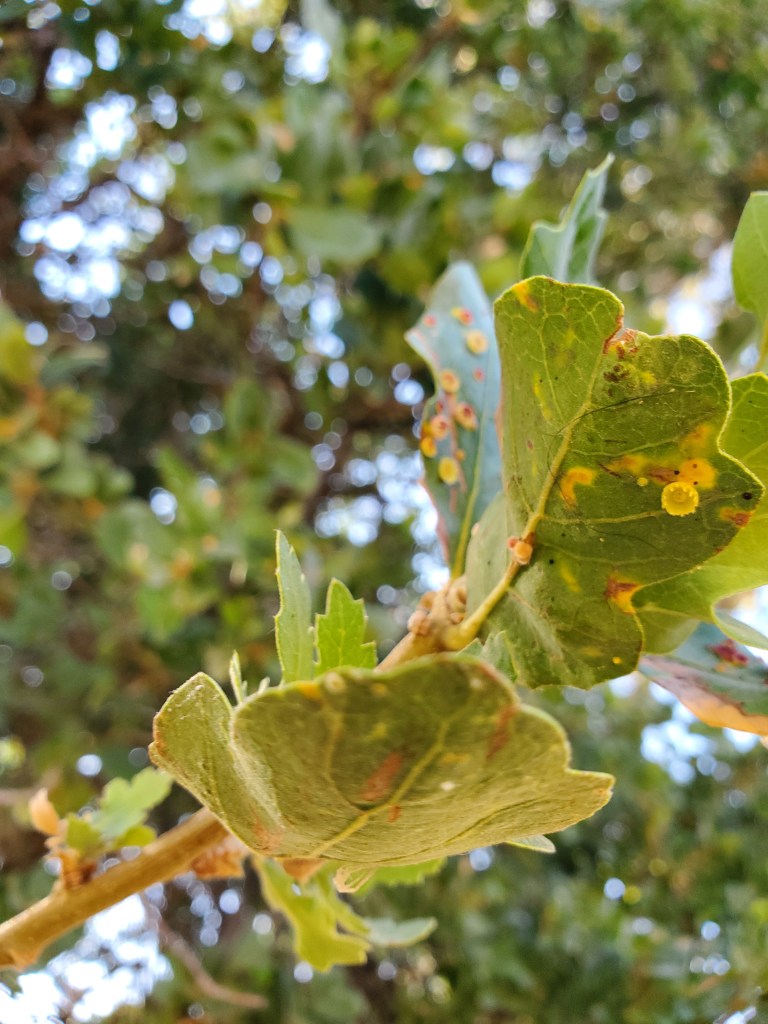

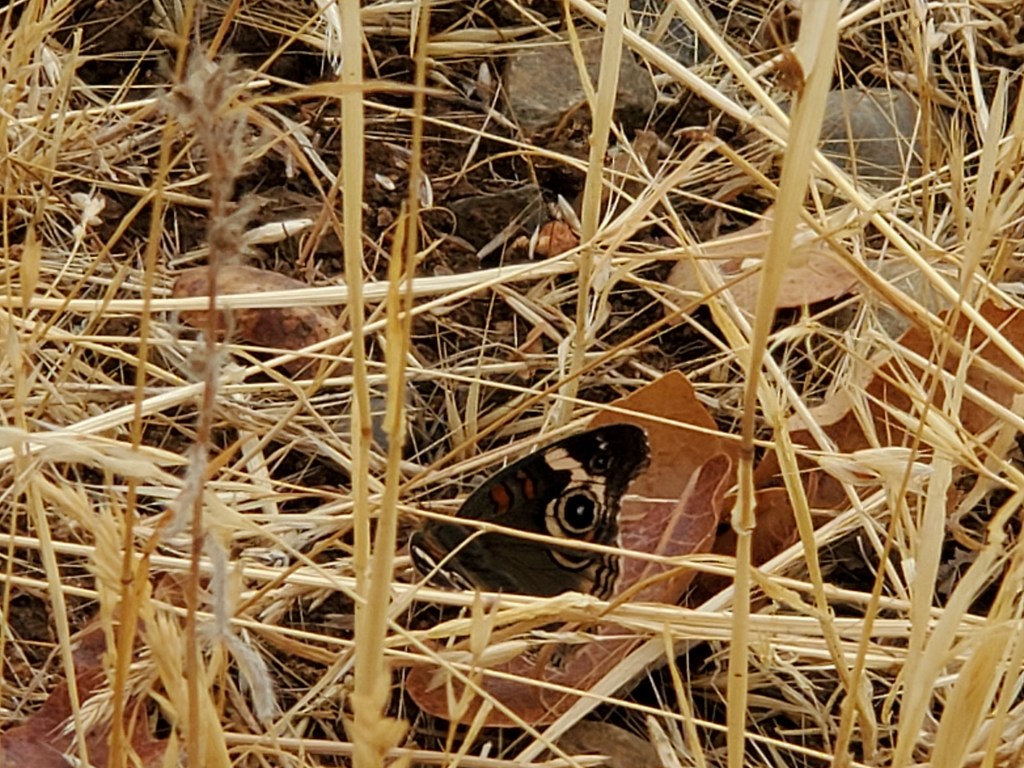
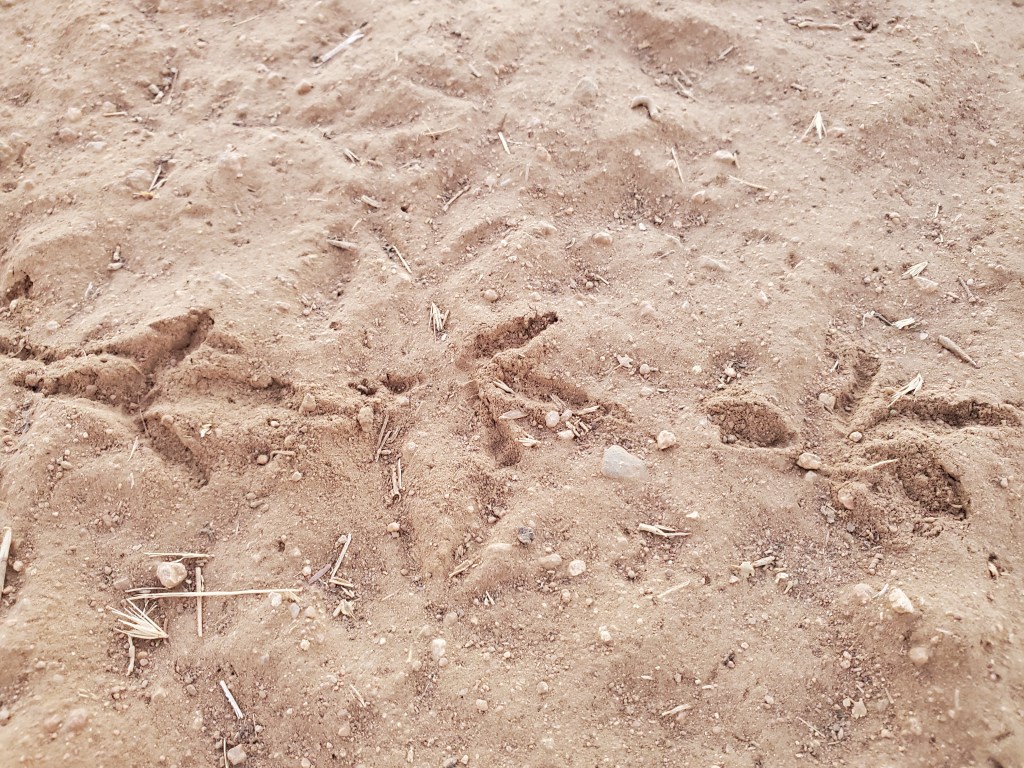
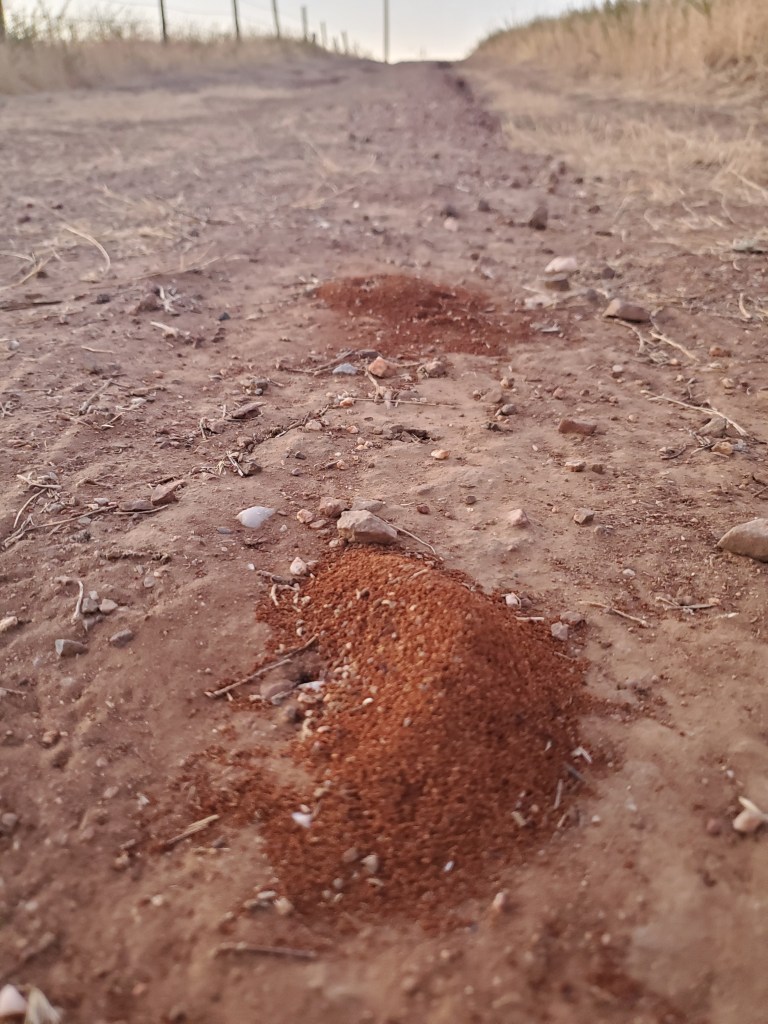
General Monitoring and Planning
I keep an eye on things, make repairs, maintain planting areas, pick up litter that blows here and all else I need to do to ensure a clean, healthy place for all creatures. I check the wildlife guzzler regularly to make sure there is water available for all. I check the brush piles and add branches to them to keep them full and safe for pile-nesting birds. I look for damage, changes, use. It is one of the fun parts of this work – especially when it is cooler. I still venture out in the heat, but only in the early morning or before dusk. Needs pop up no matter the temperature, and I have a responsibility to this place. The time inside during high heat days give me the opportunity to plan for my next projects. Currently, I am working on a self-watering guzzler. The idea is to capture rain from a structure and gravity feed it into a guzzler. Parts of the ranch are more remote and not easily accessed by vehicle. Bringing water to those locations would be difficult and require more monitoring of water levels, the hauling of water. If I had a system that self-watered and self-regulated, that would save time and decrease the need for me to disturb areas.



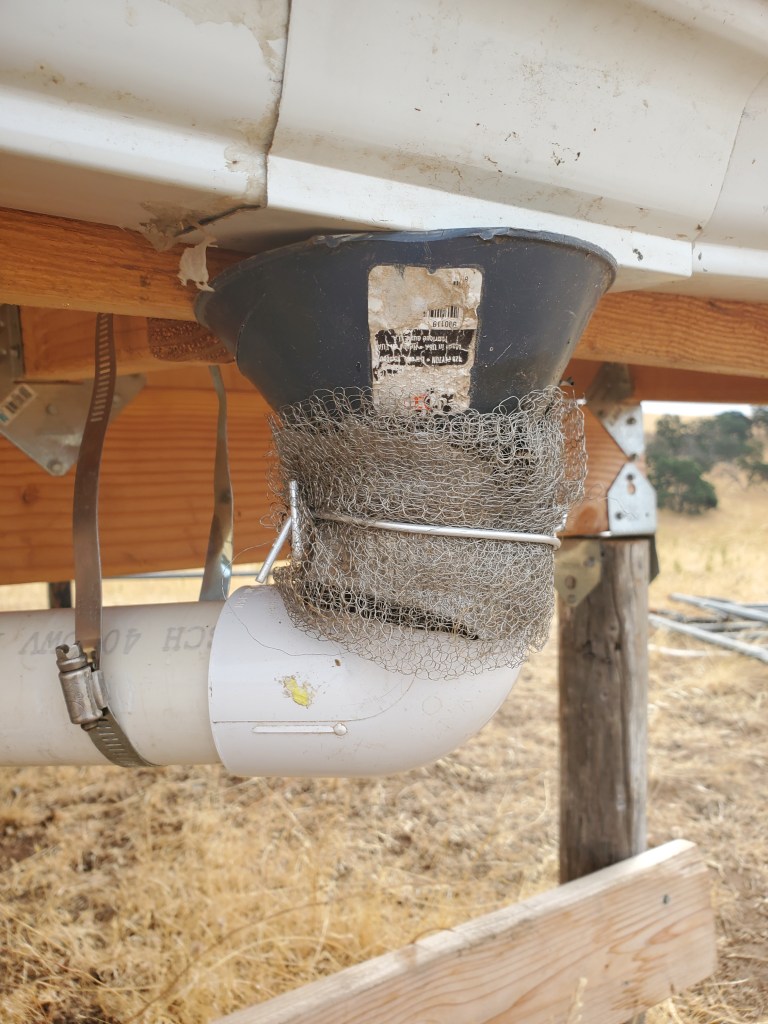
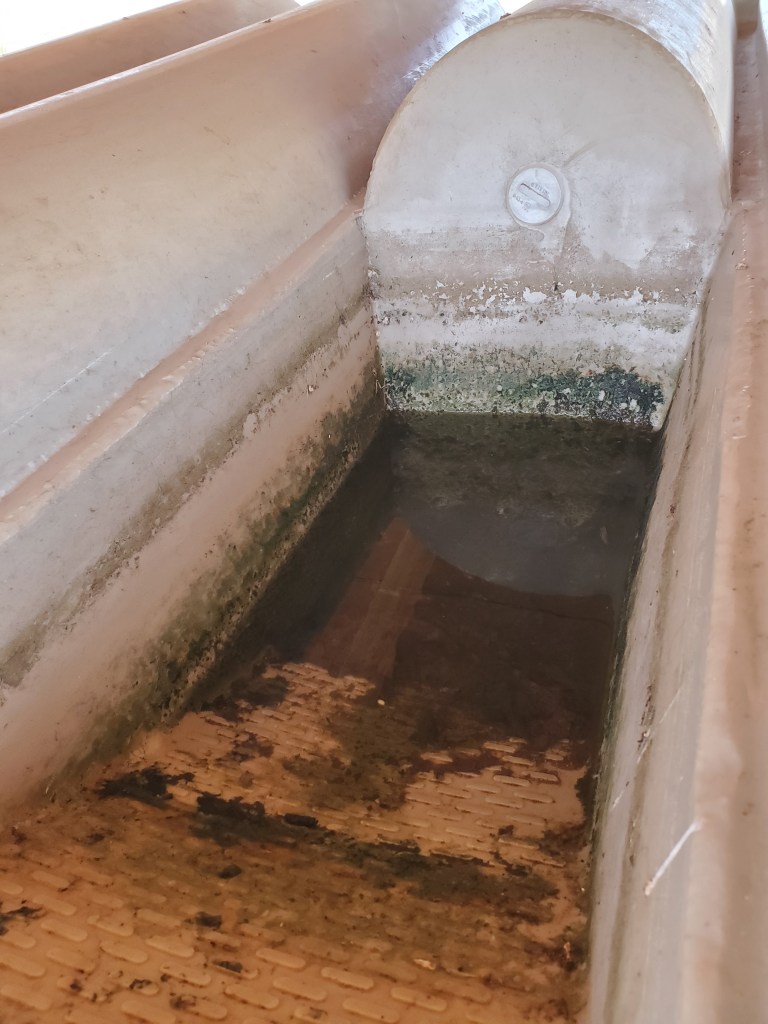
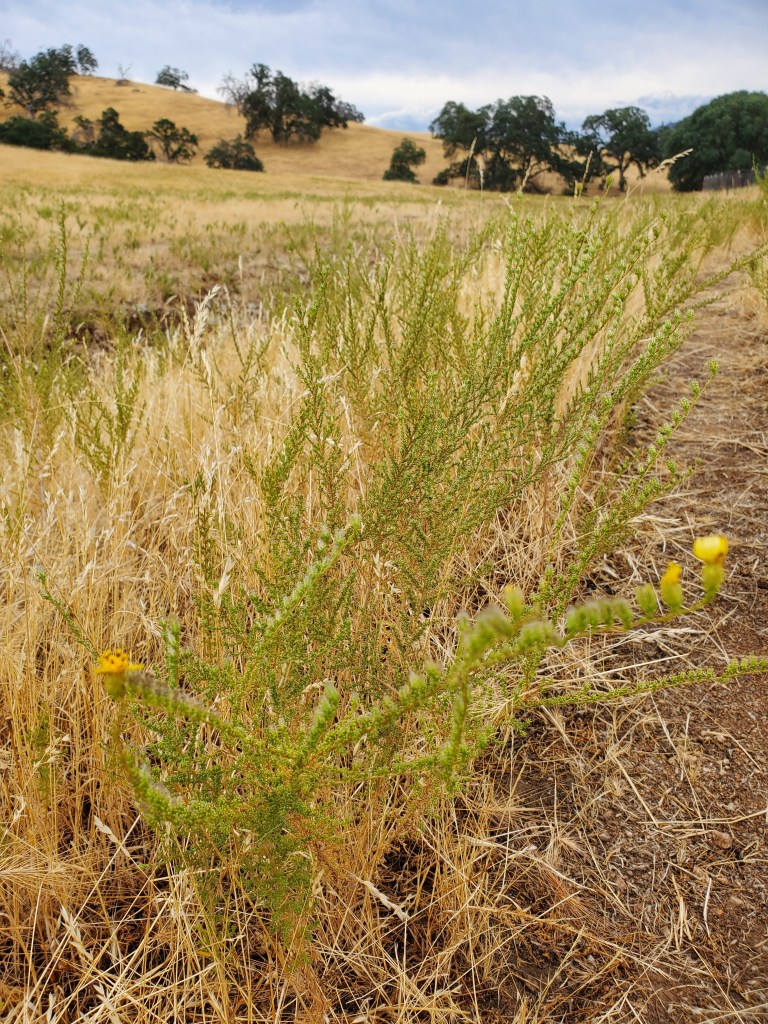
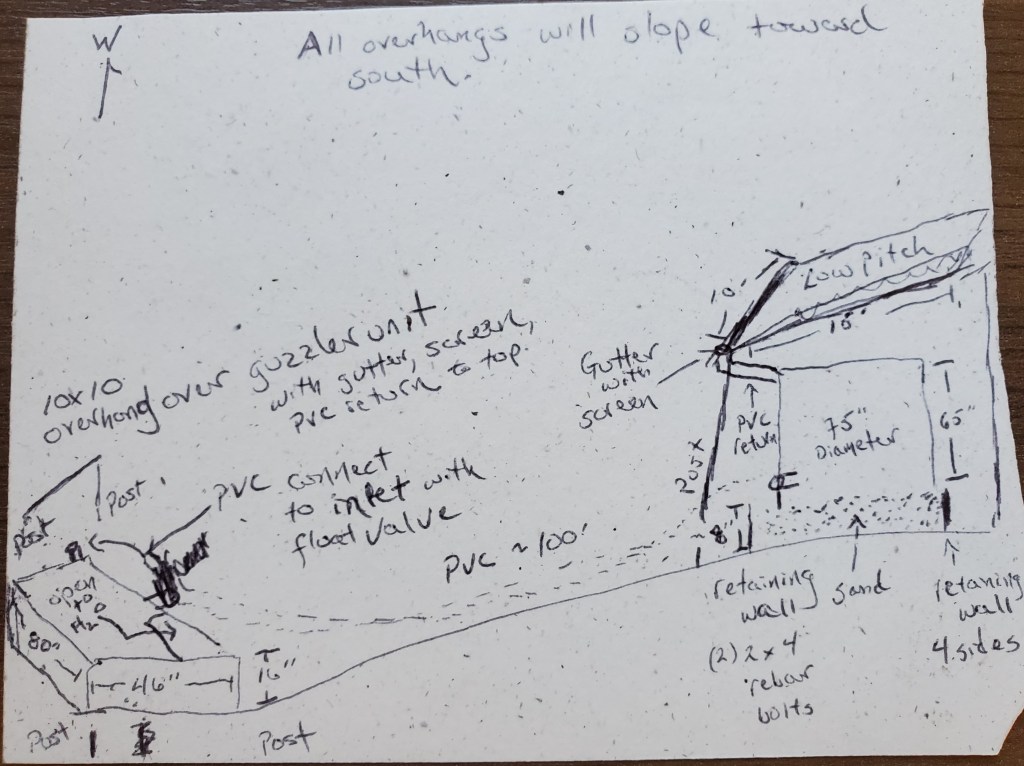

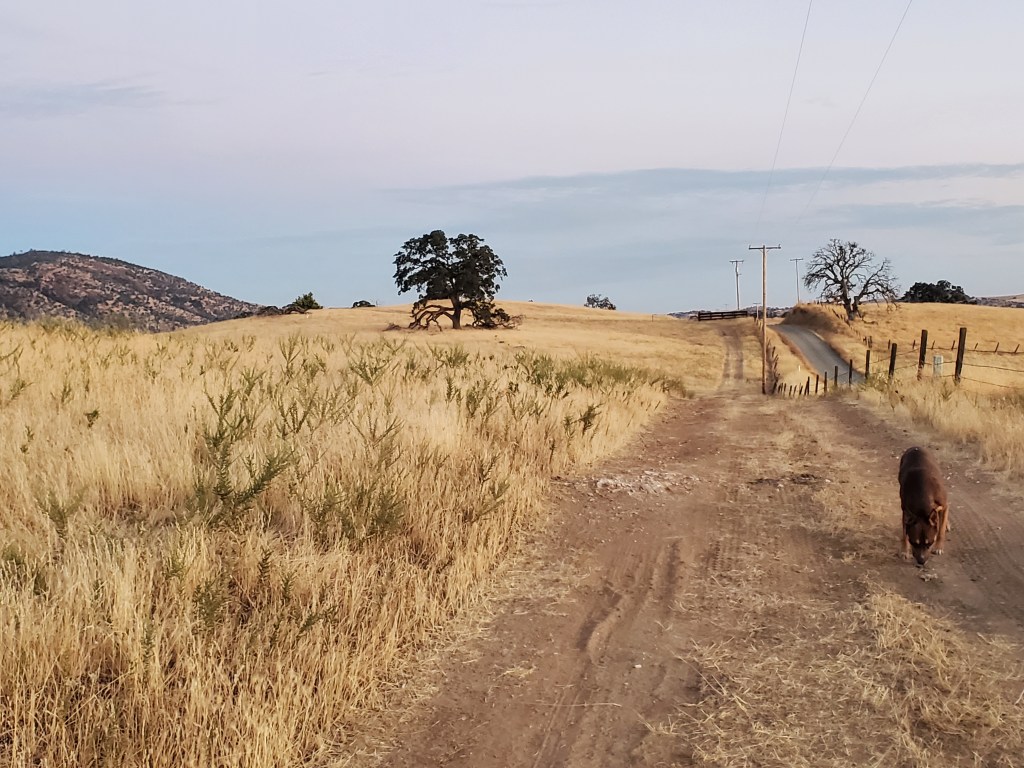
Next Items
Up next in September/October/November/December:
- cross fencing to protect california milkweed during grazing times
- self-watering guzzler build
- seeding disturbed areas from rock and log drop structure installation
- install two more log drops/check dams
- Help Tribe plant Xerces kits
- Help three friends convert their lawns/yard into pollinator habitats
Wanderings
The skies have changed from heated blue to gray clouds and night purples and then back to blue. Light is beginning to recede at both ends of the day. A few people I care about have gone with the daylight, but in mother earth’s endless cycle of days, nights, seasons, abundance and scarcity, three have left and three are soon to arrive. Pain converts to joy and then to acceptance of the world and all its comings and goings. Memorials and baby showers. Winters and Springs. Milkeed and monarchs. Beauty is everywhere, especially in the love which undergirds both loss and gain in the spectrum that is life.
